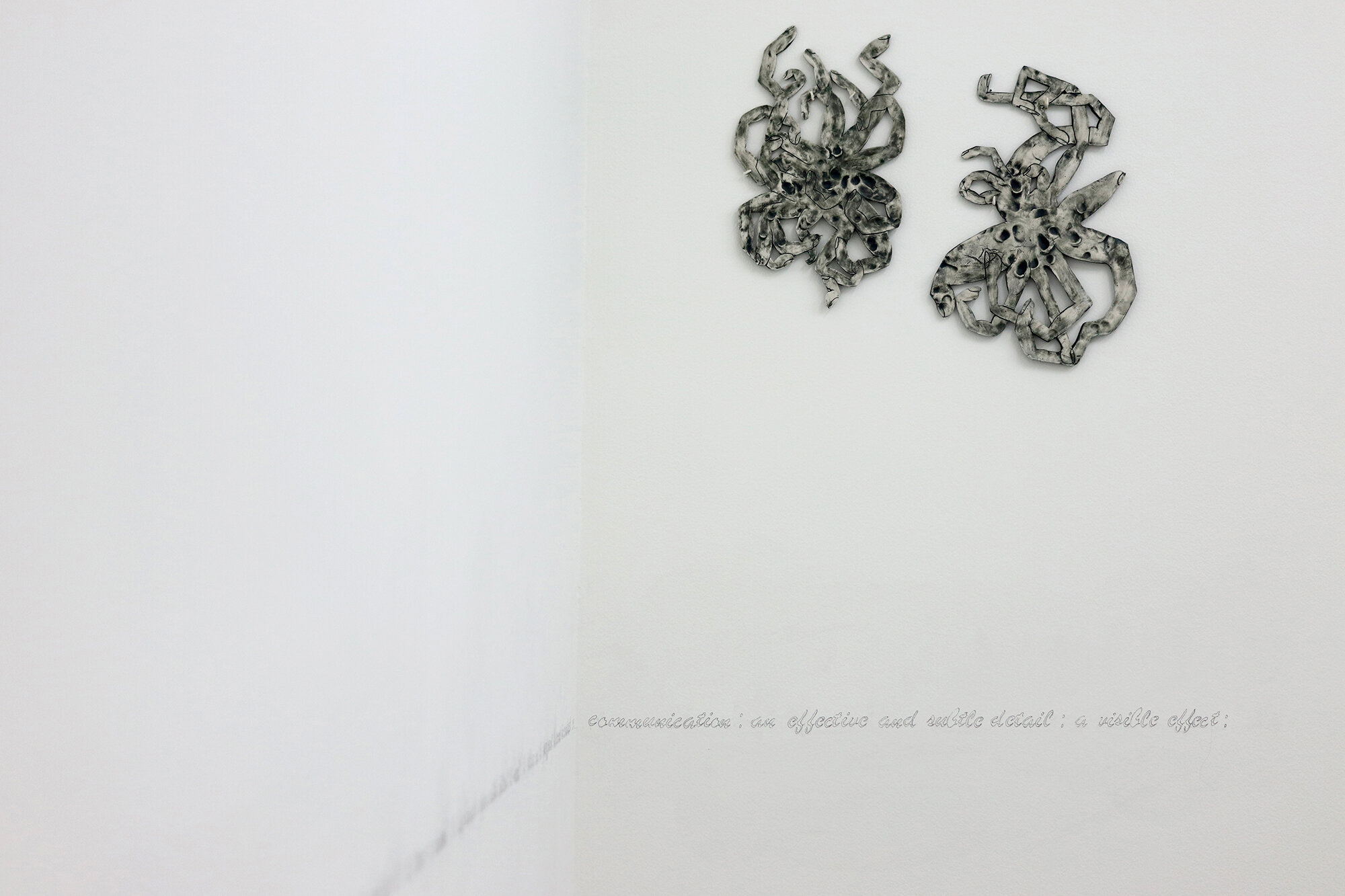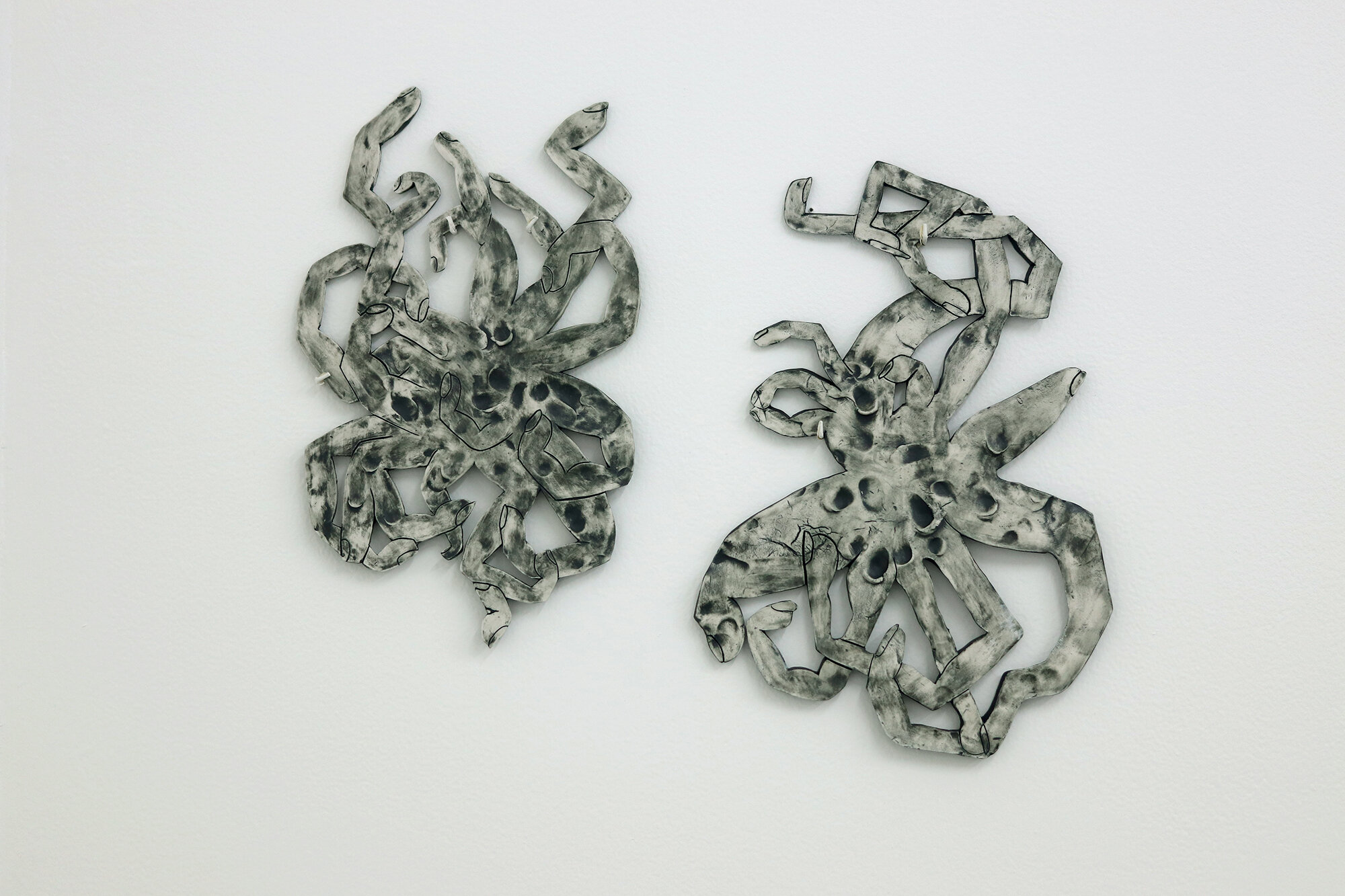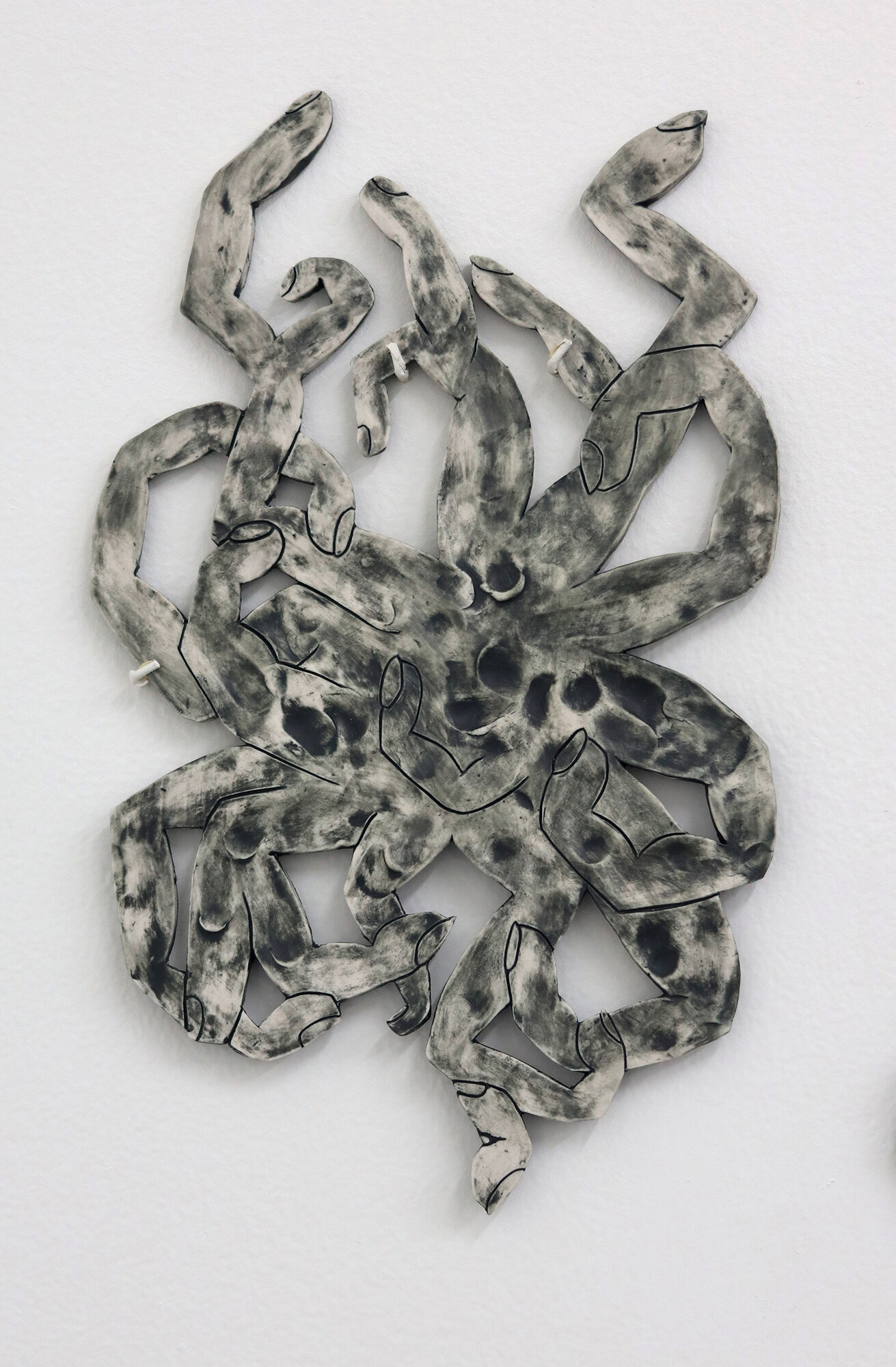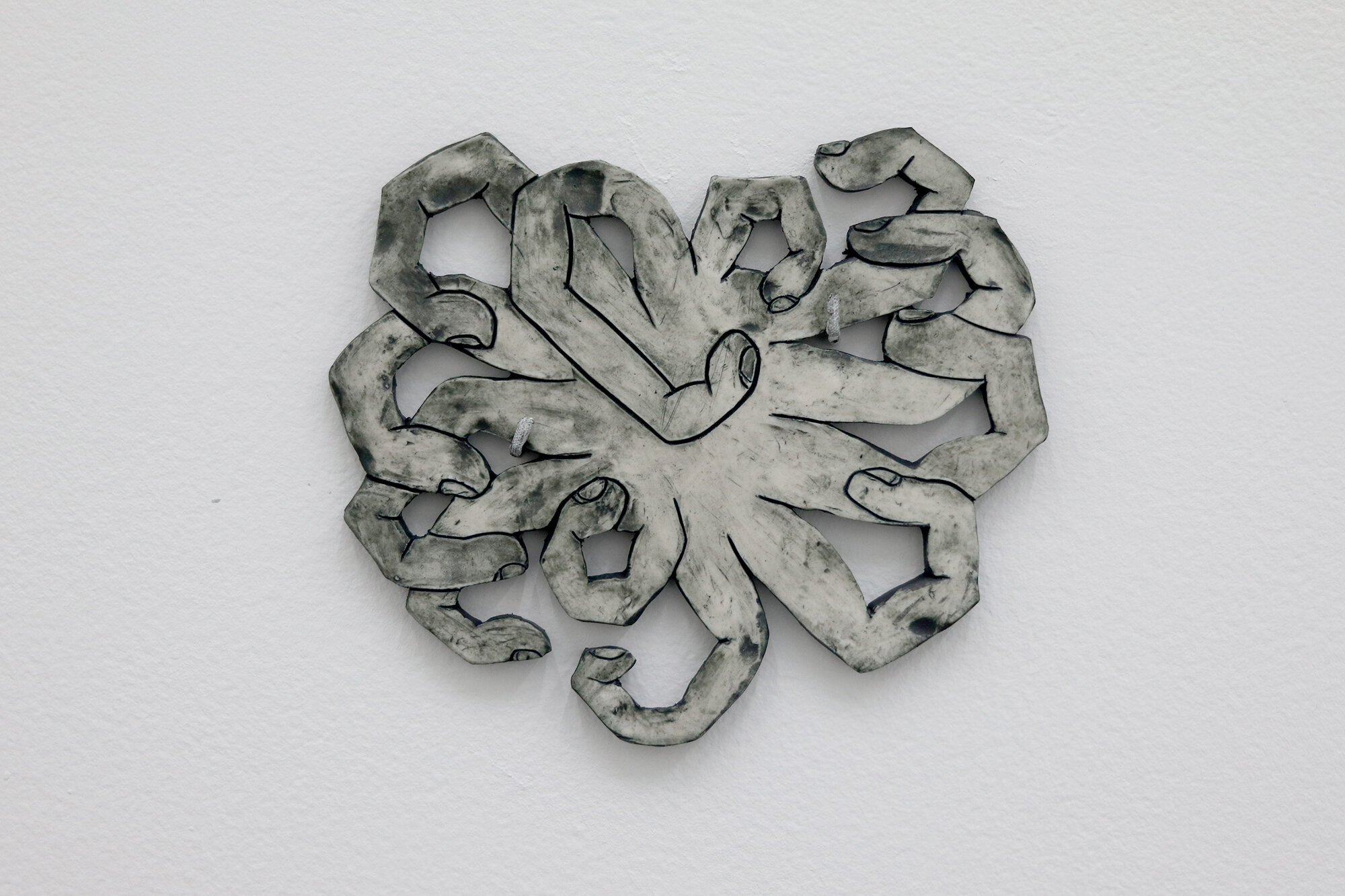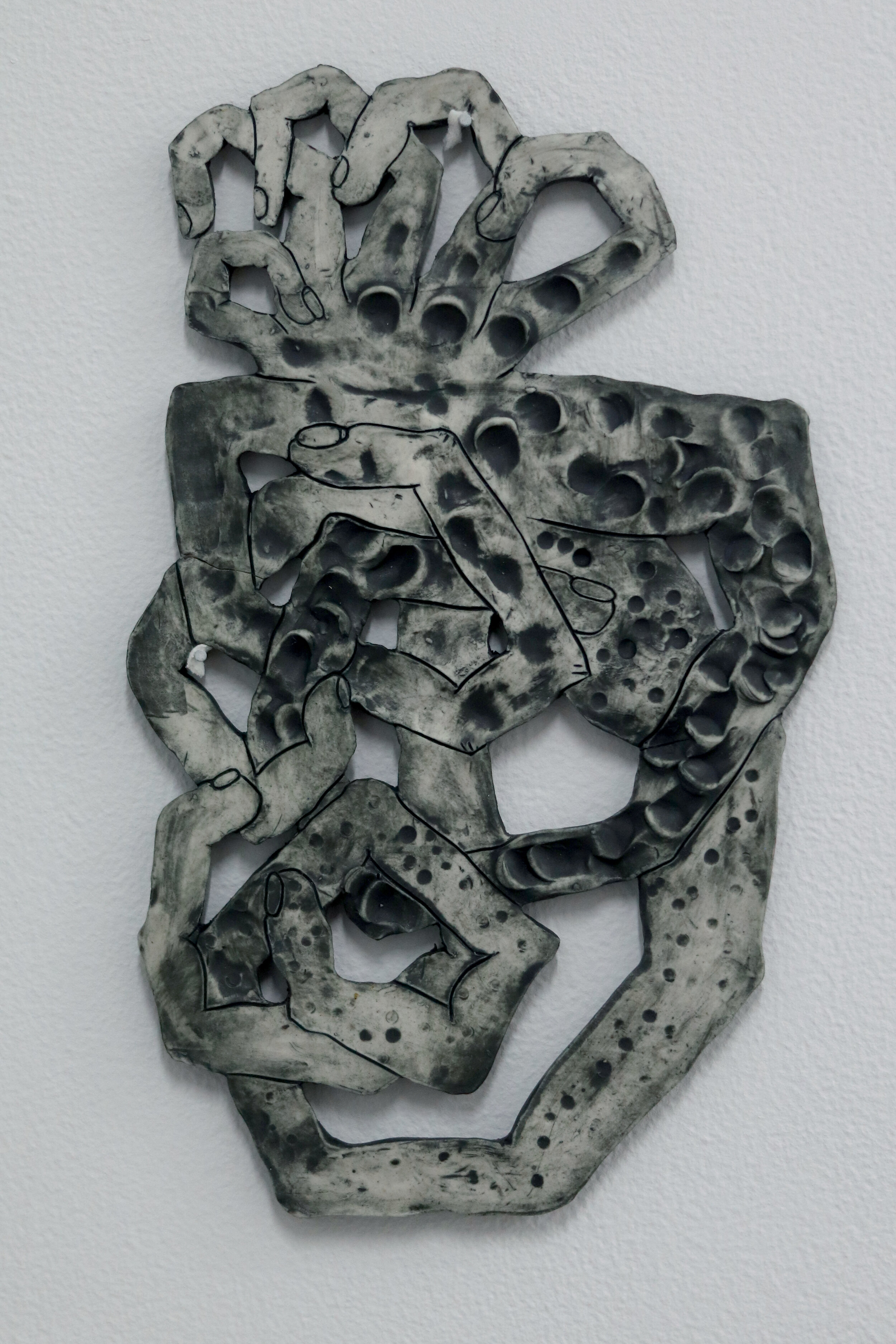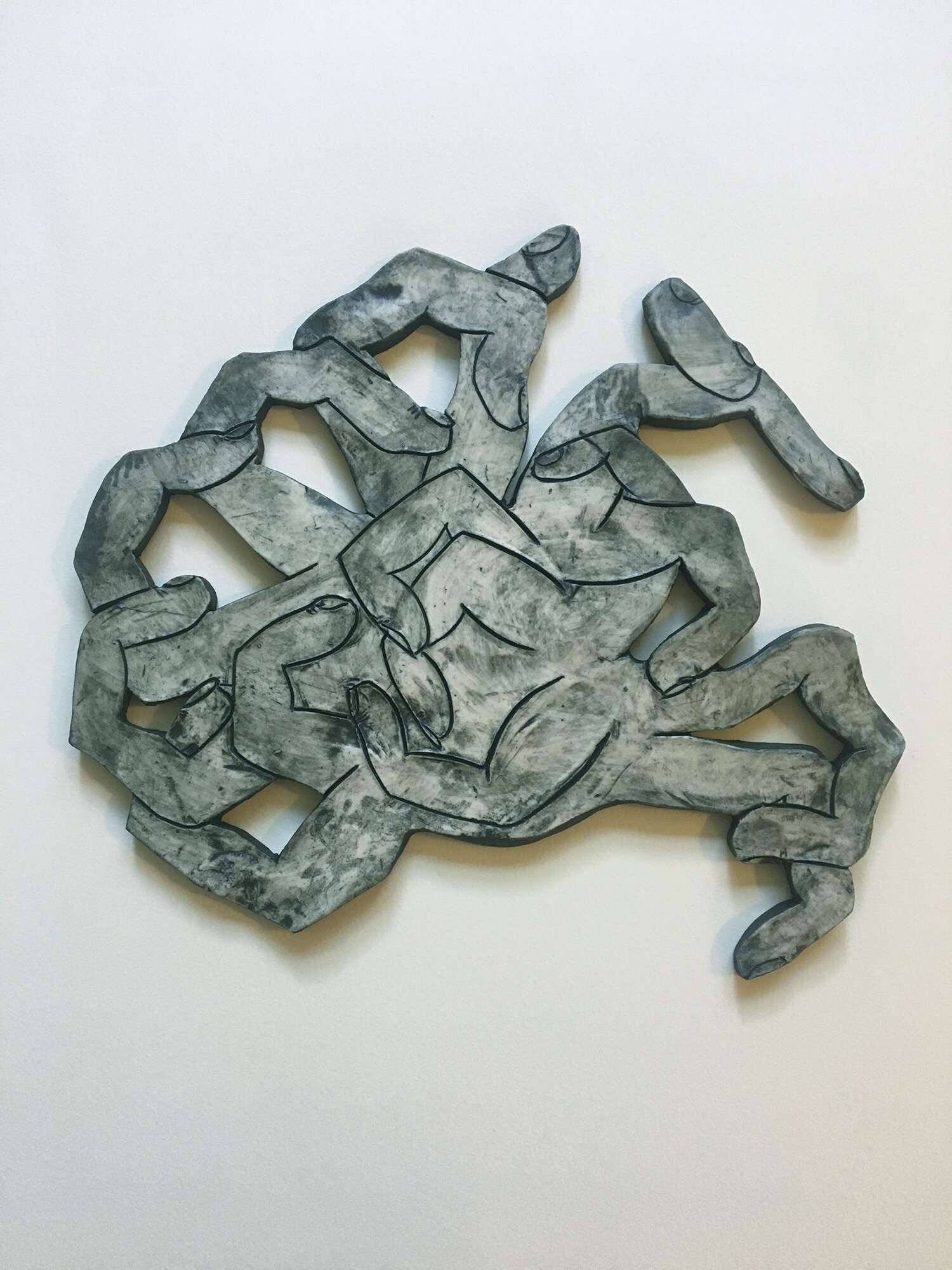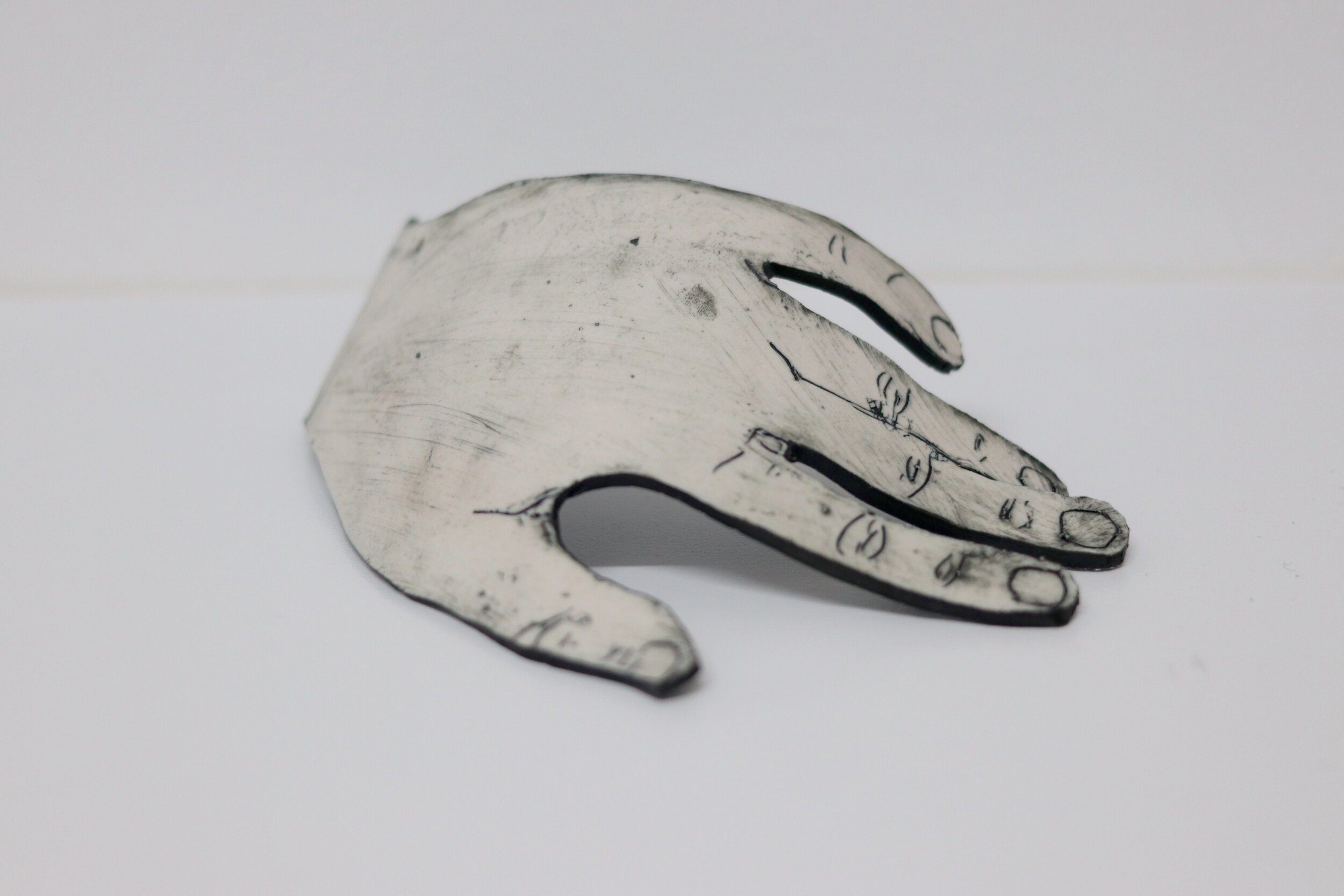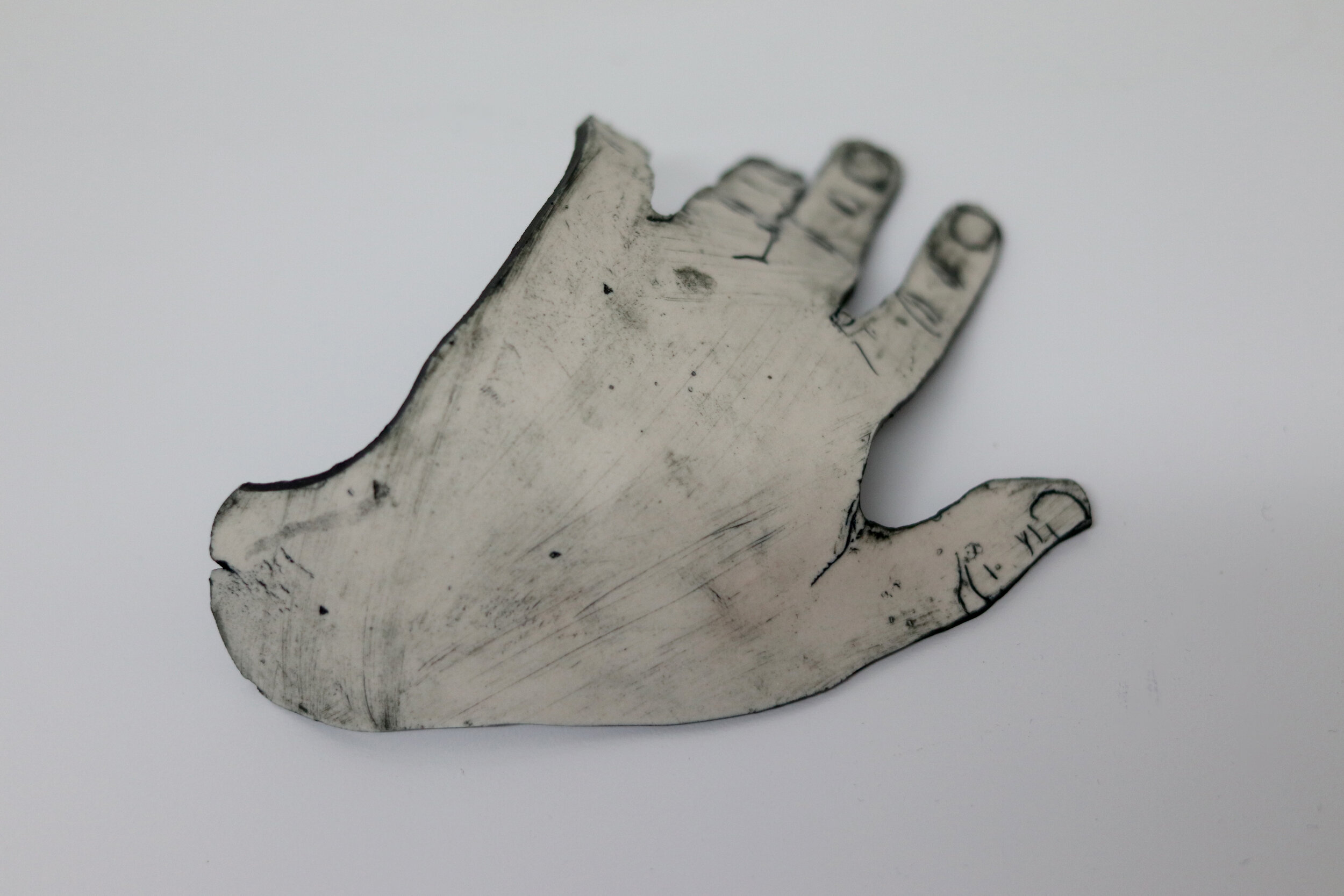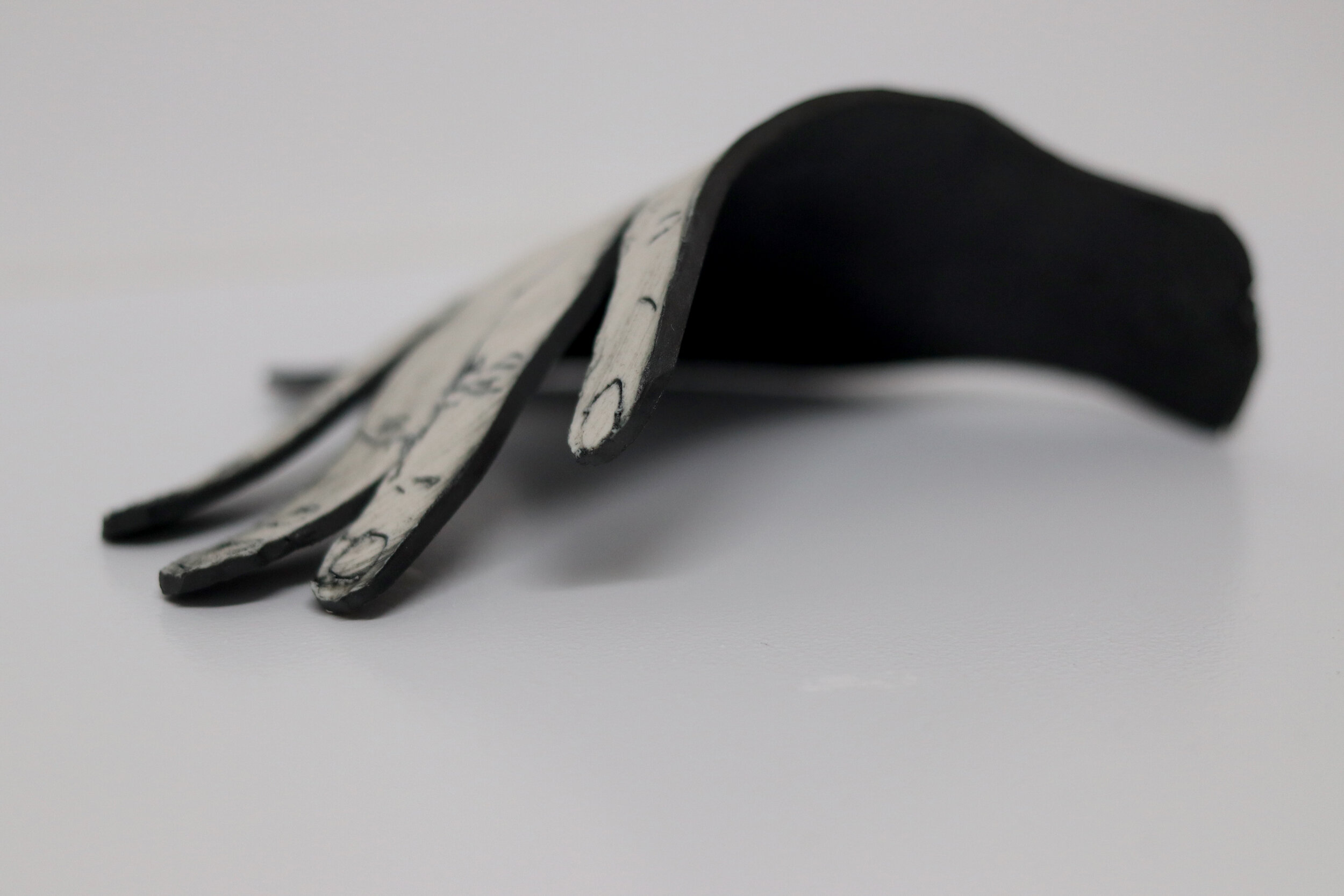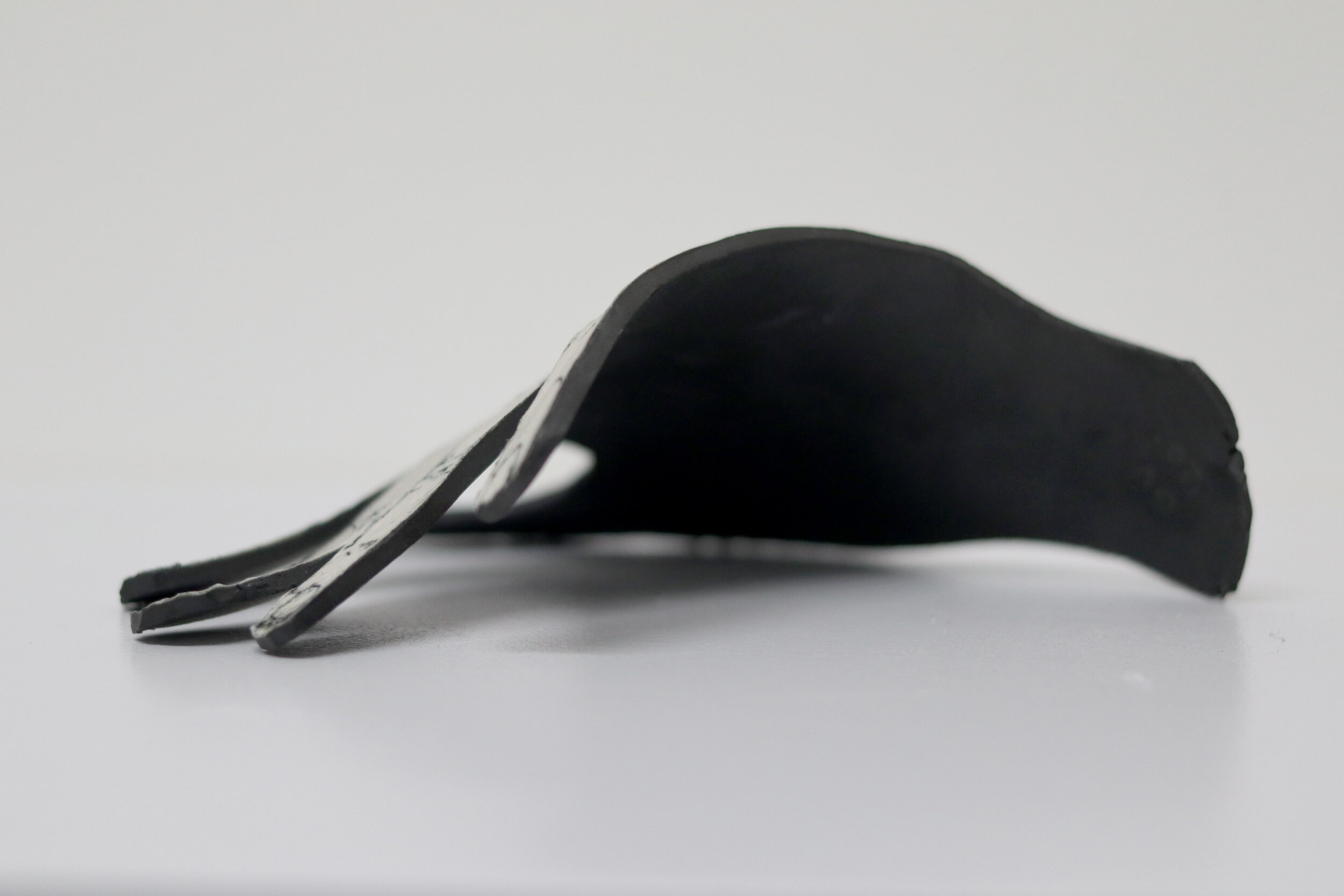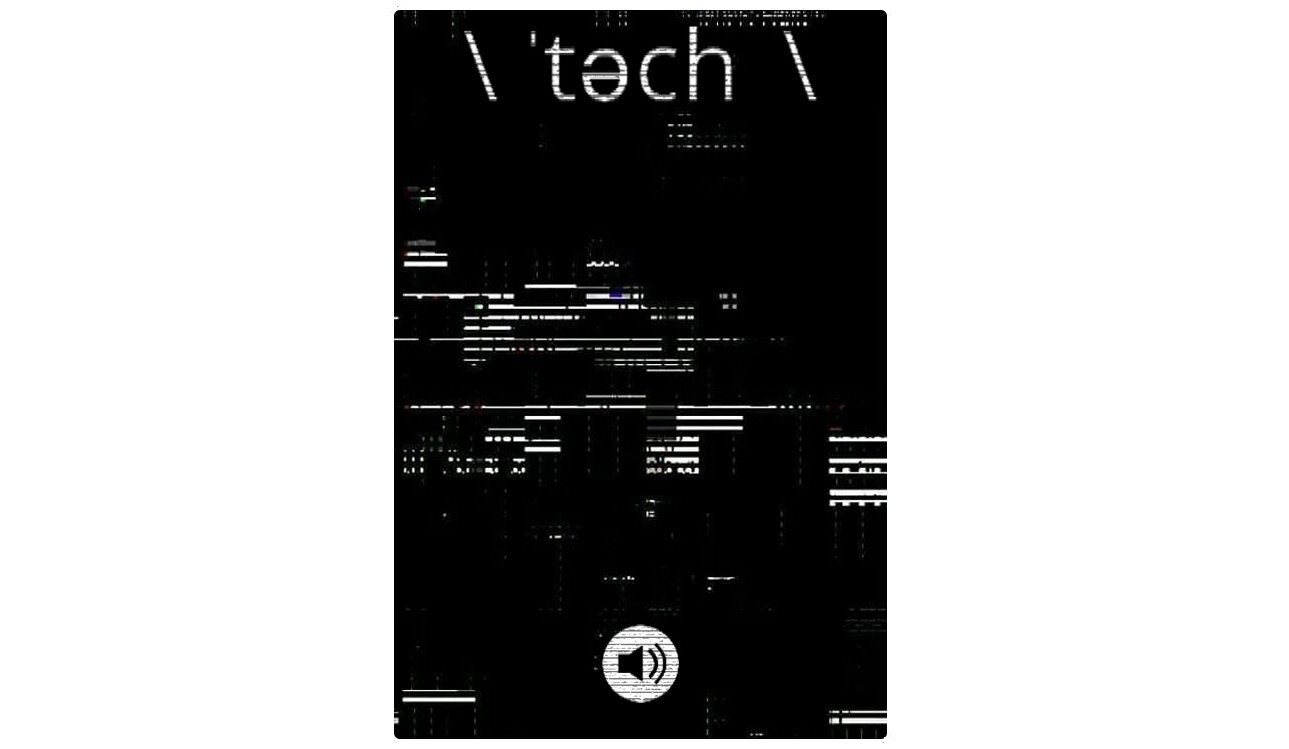\ ˈtəch \*
Natasha Das
Liliya Lifanova
Spandita Malik
Jaye Moon
Elizabeth Moran
Sophia Saze
Gabriela Vainsencher
November 23, 2020 - February 3, 2021
\ ˈtəch \* is a proposition exploring touch as a cognitive apparatus. It poses a simple question: What happens when we are denied our most primal way of understanding, learning, and relating to ourselves and the world around us? Through the intersection of works by seven women artists, the show emphasizes the 'hand-made' as a principal instrument to activate the artwork or define it. Ranging from a broad spectrum of the mediums - such as painting, ceramic, photography, embroidery - the show includes sound, fashion, and design objects - where each work challenges the limits of its own medium and materials.
The exhibition itself questions the ways of representation and concept building. It consists of two physical parts – an installation in the project space and "Indexical" in the backroom. \' təch \ is co-organized with Levan Mindiashvili.
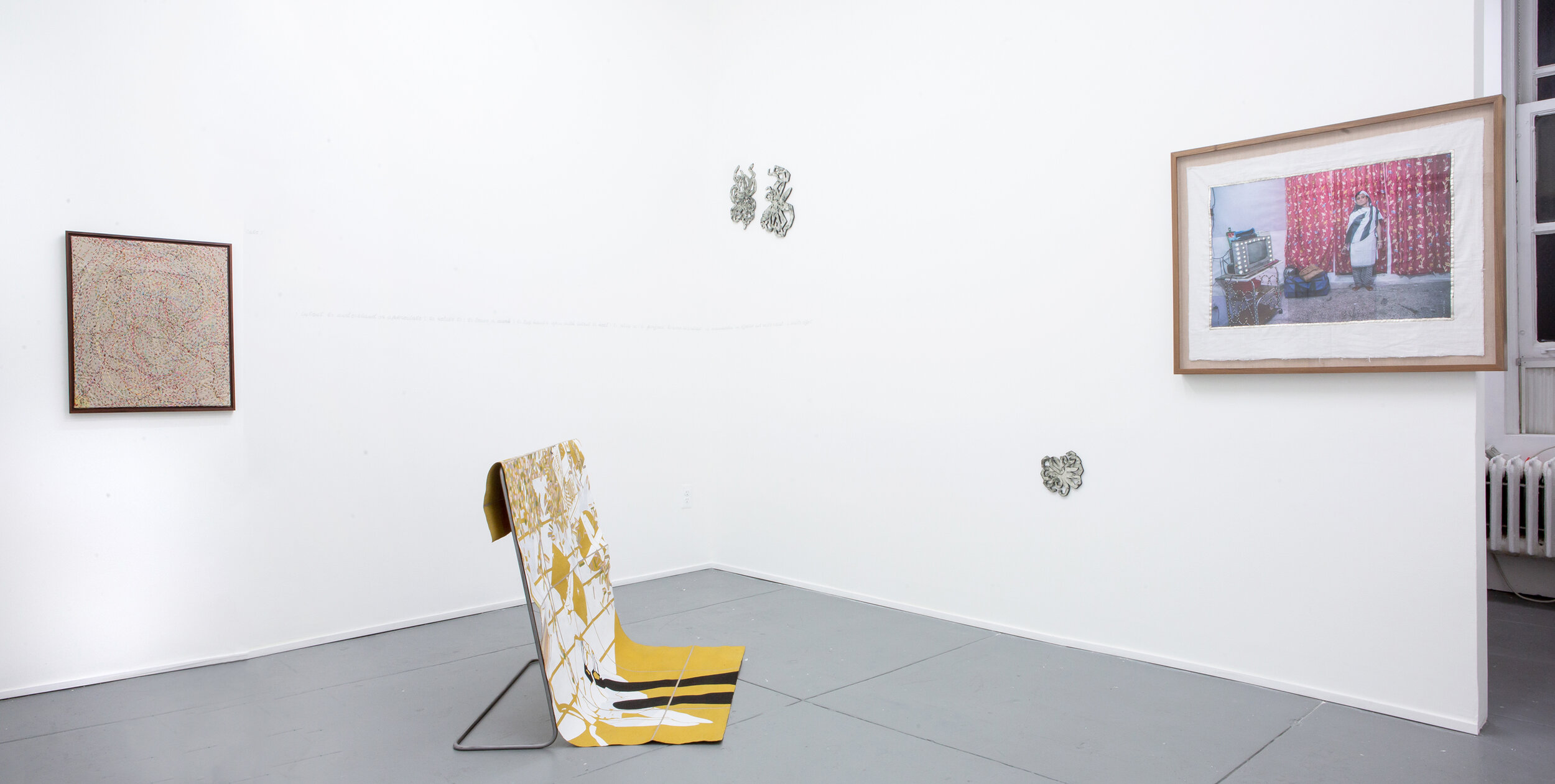
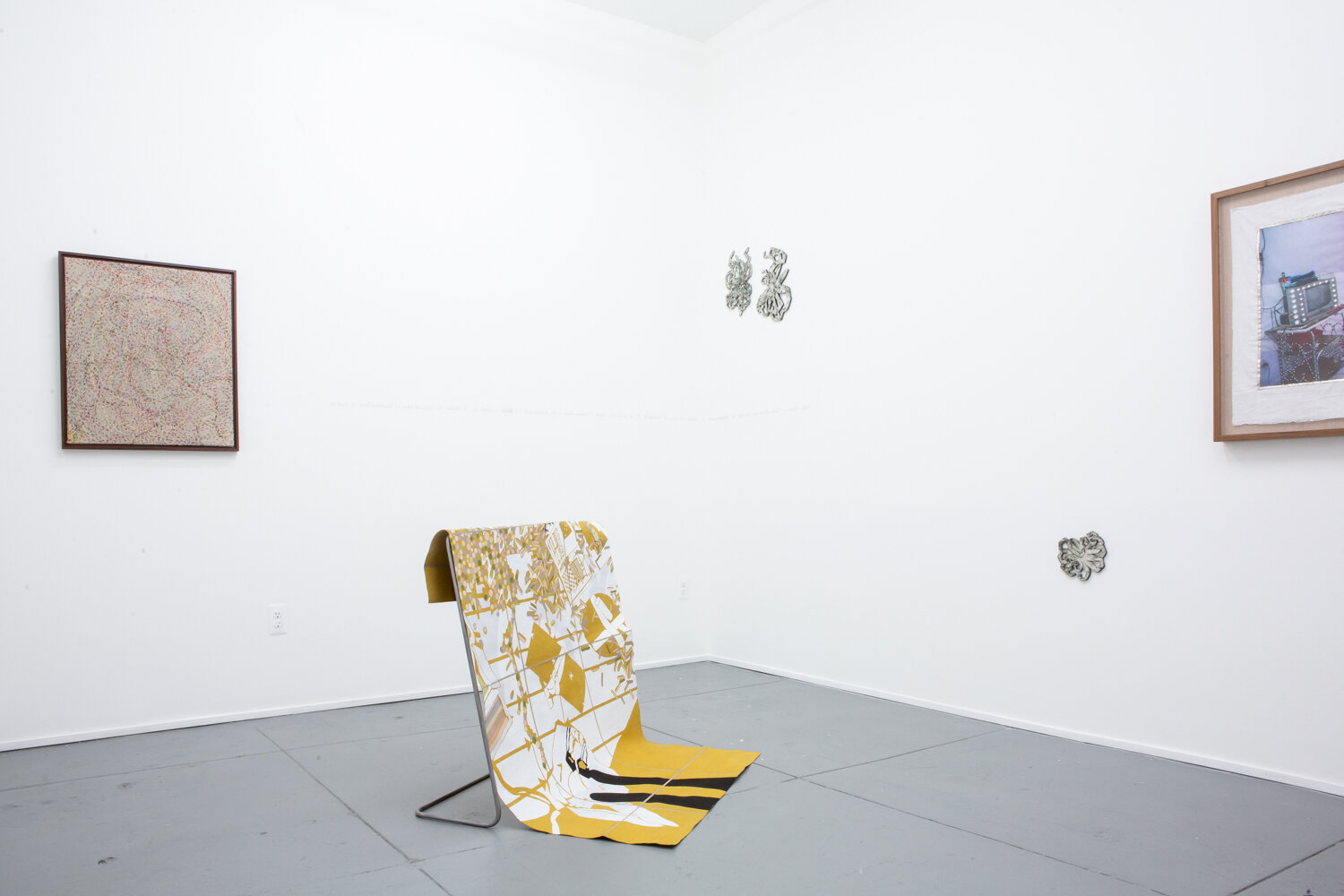

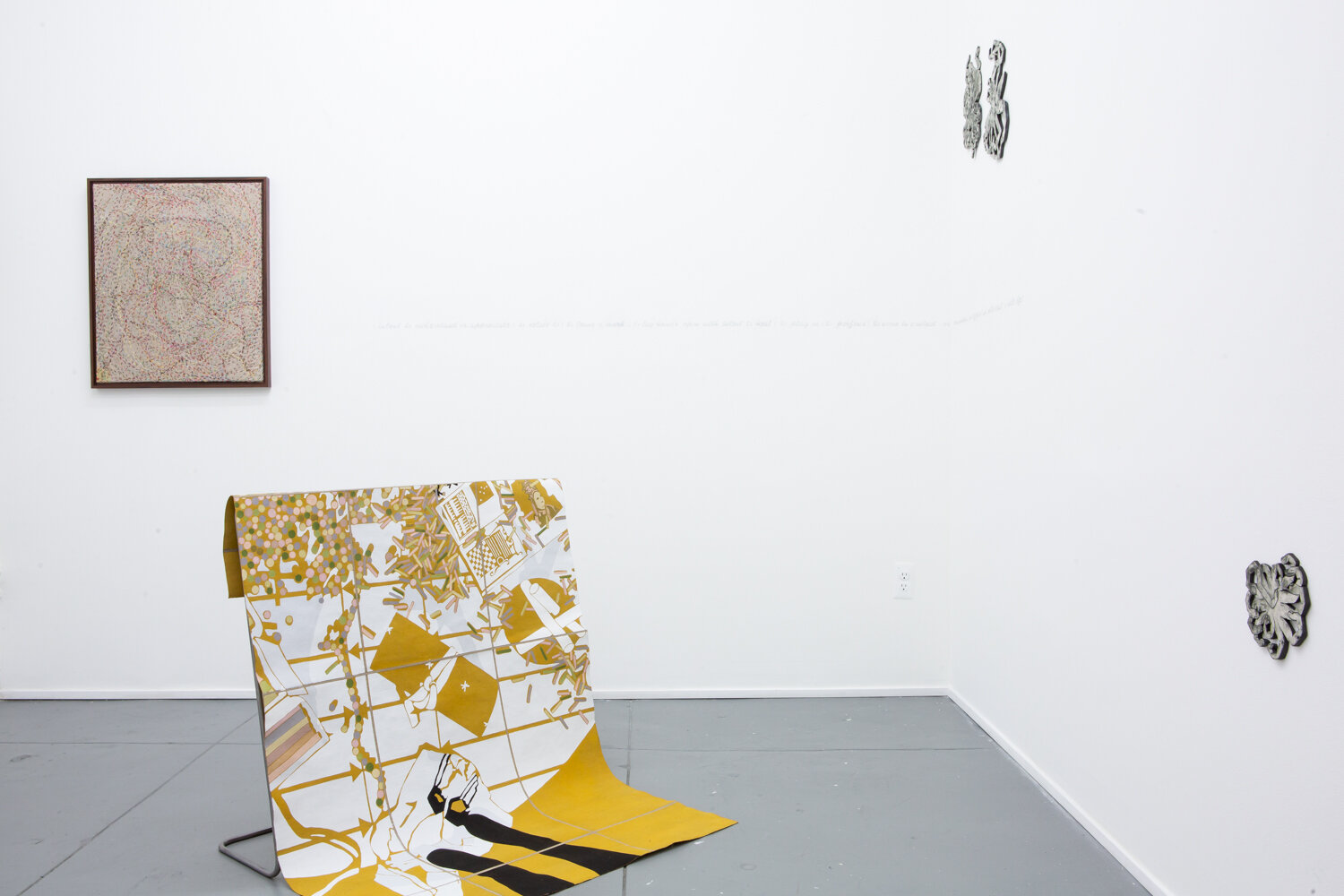
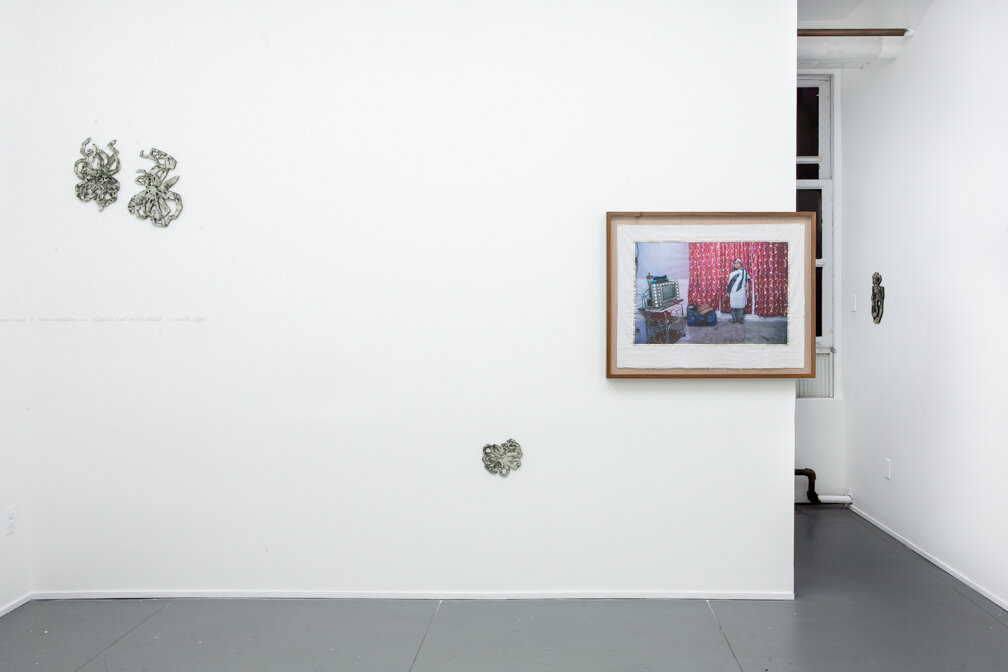
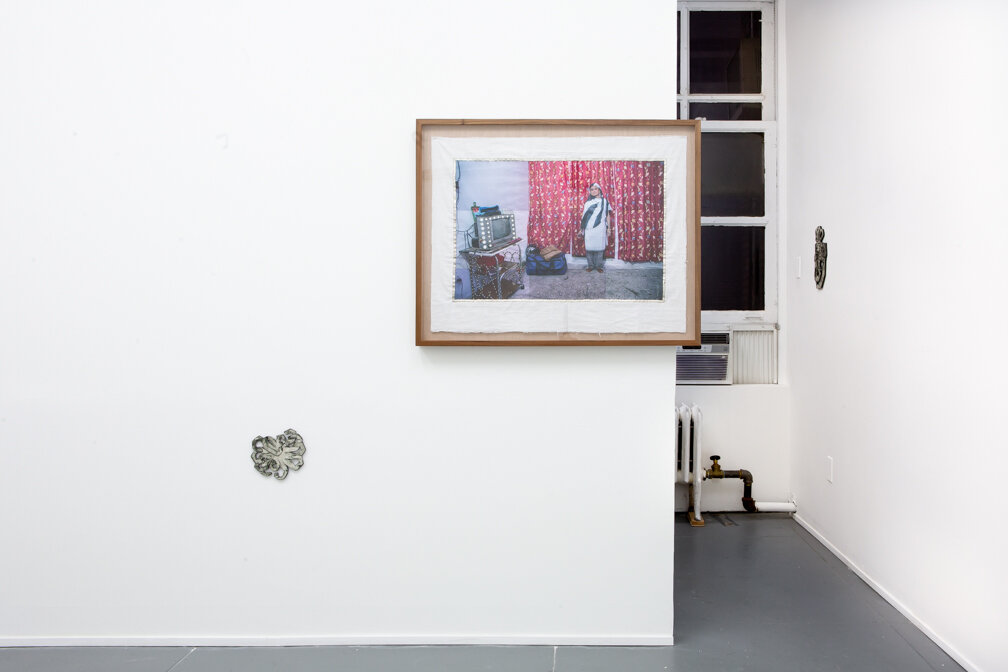

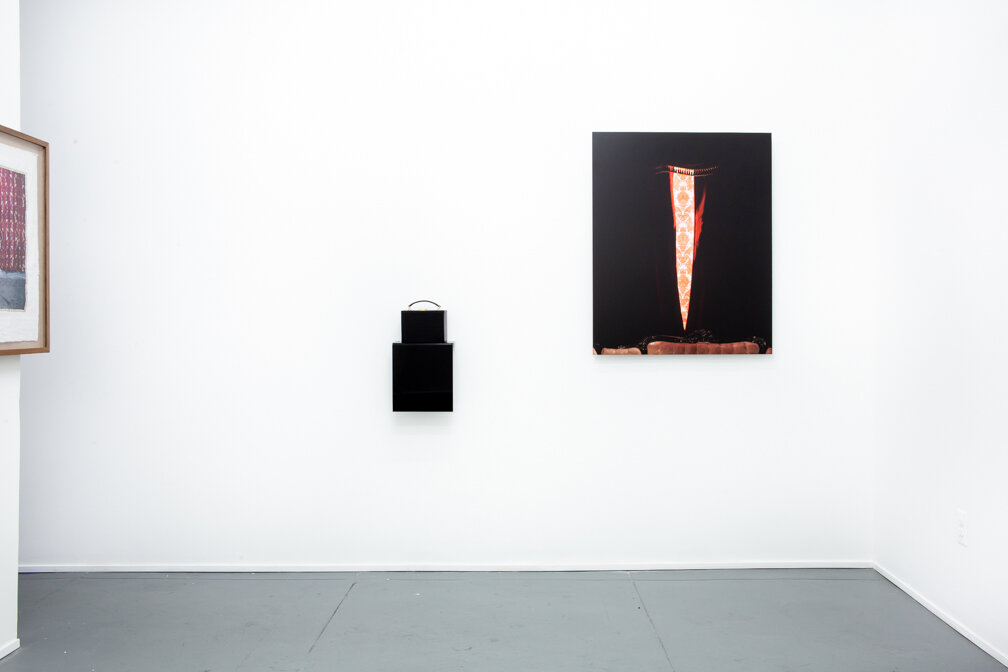
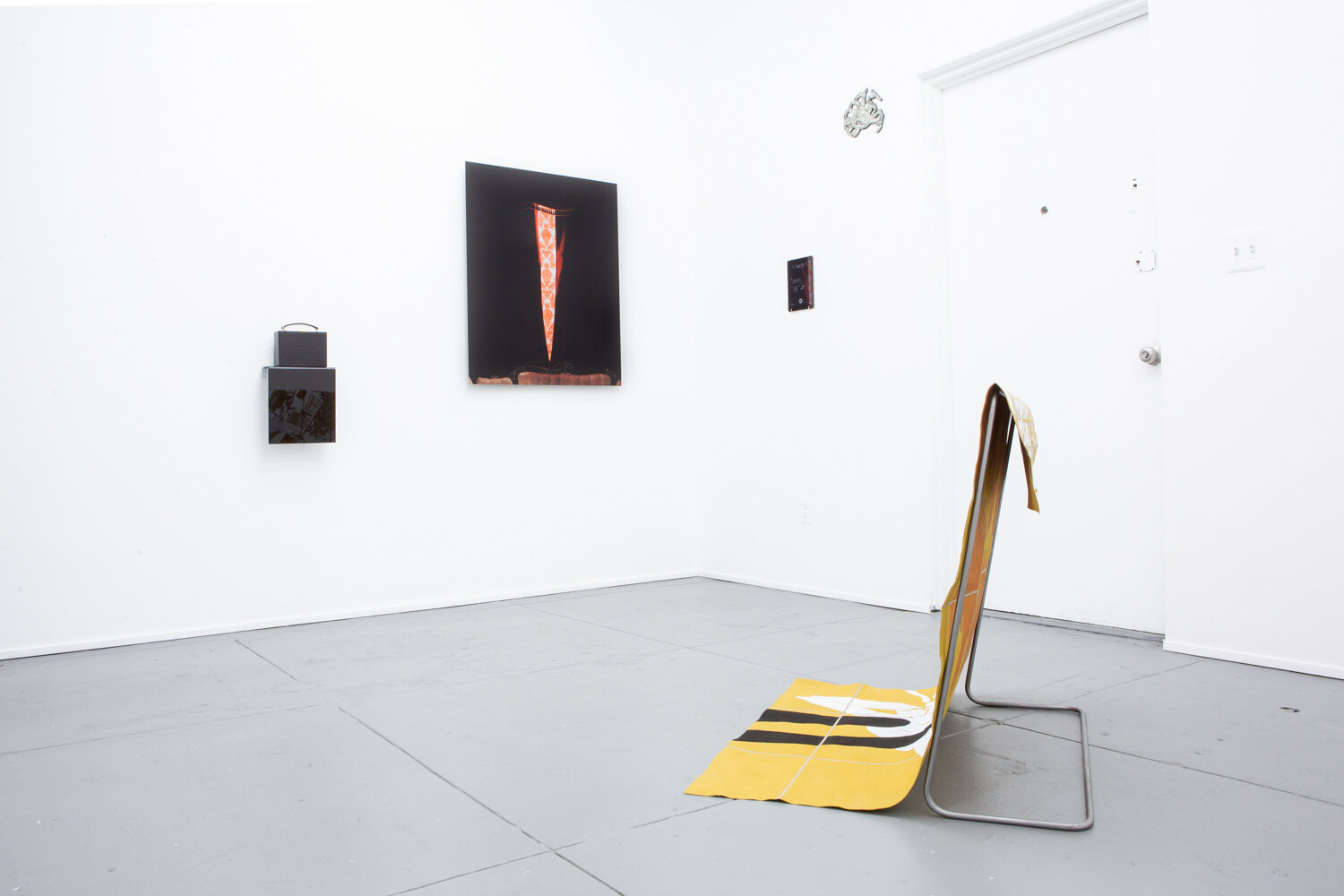
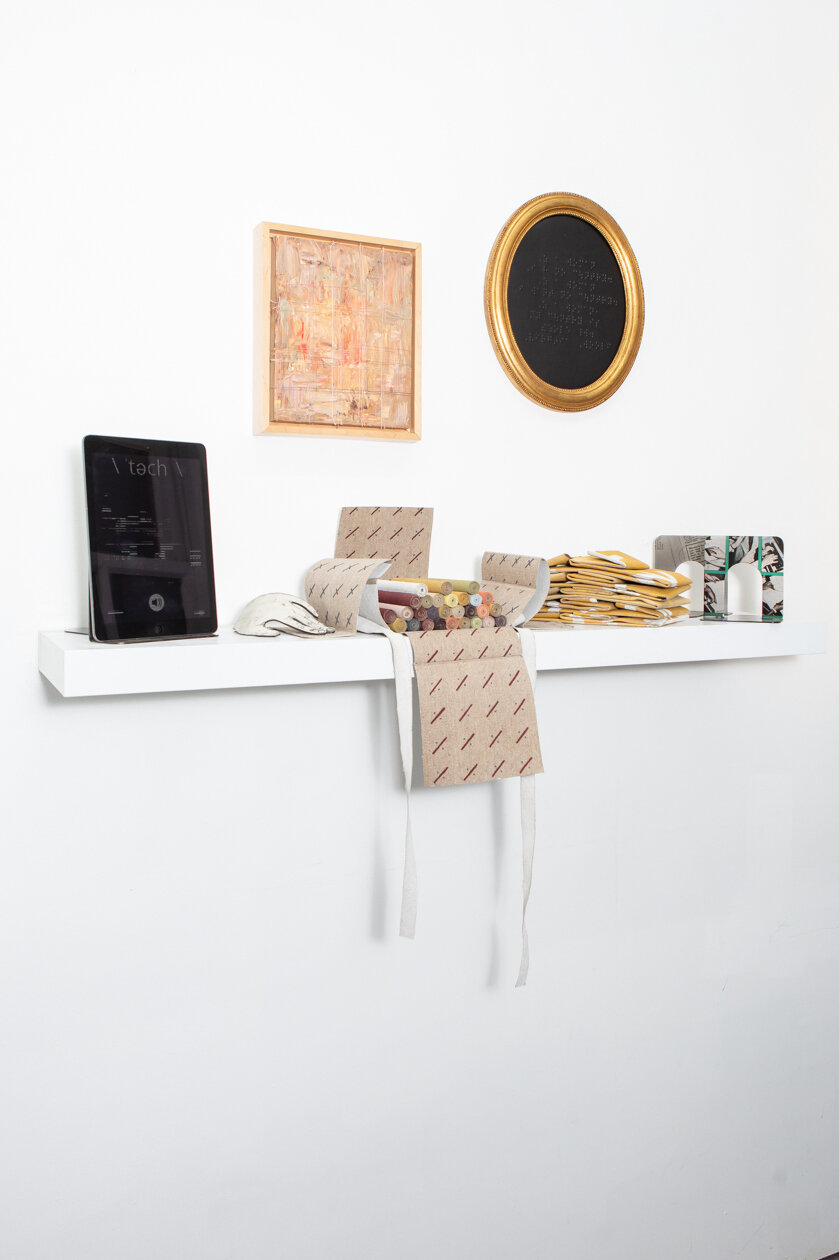
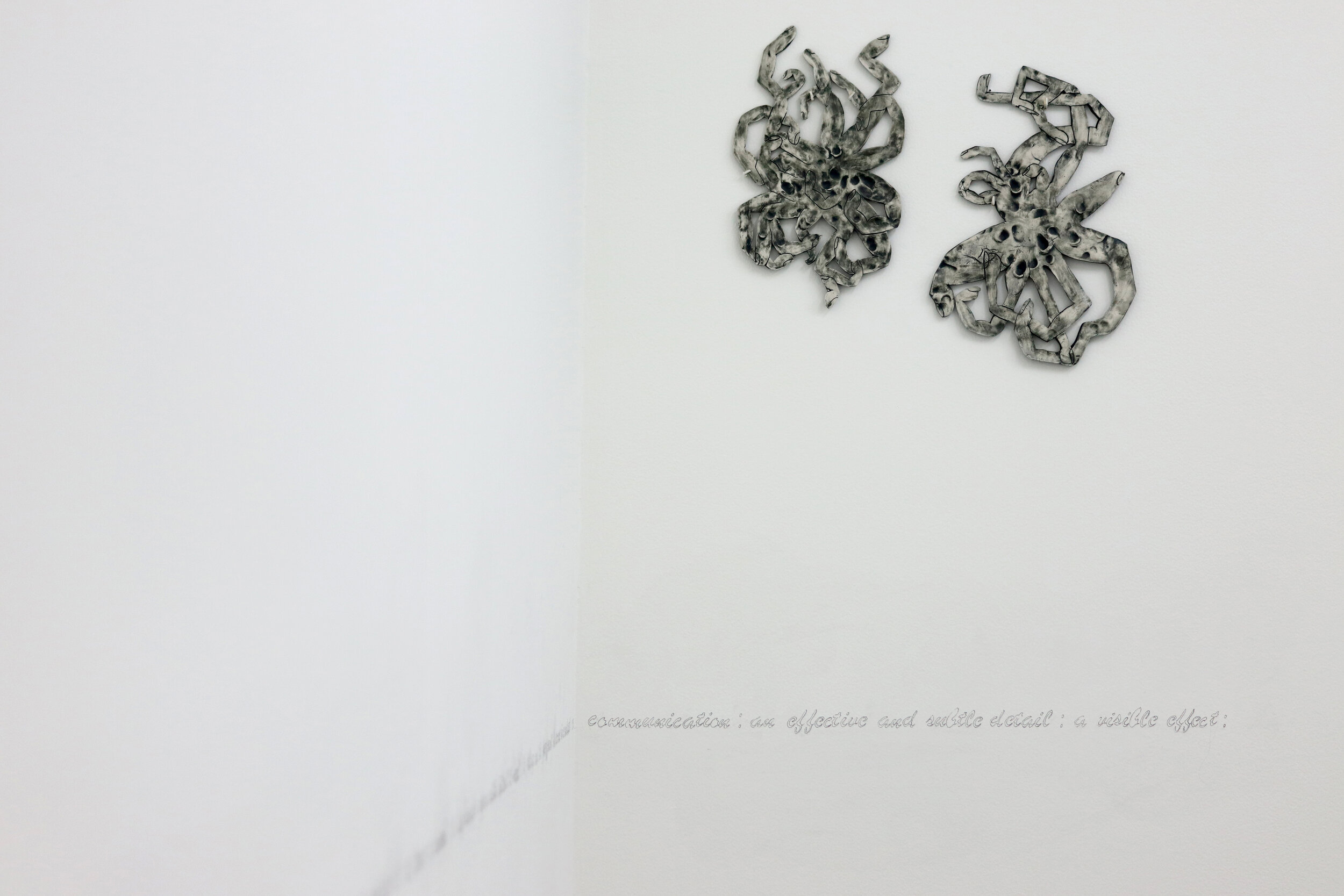
: intent to understand or appreciate
: to speak or tell of especially in passing
: to relate to
: to move to sympathetic feeling
: to leave a mark or impression on
: to draw or delineate with light strokes
: to lay hands upon with intent to heal
: to play on
: to perform
: to feel something with a body part
: to be in contact
: to come close
: to come in contact or communication
: the special sense by which pressure or traction is perceived
: a specified sensation that arises in response to stimulation of the tactile receptors
: a light stroke, tap, or push
: an effective and subtle detail
: a characteristic or distinguishing trait or quality
: mental or moral sensitiveness, responsiveness, or tact
: a small quantity or indication
: a near approach
: a visible effect
: ability to precisely control the path and speed of a shot or pass
_
*As defined in Merriam-Webster Dictionary
Touch (Indexical), 2020
Works of Natasha Das, Liliya Lifanova, Jaye Moon, Elizabeth Moran, Sophia Saze, and Gabriela Vainsencher on plywood shelf and on the wall,
Overall dimensions 34 x 43 x 13.5 inches
ARTISTS
Abstract paintings of Natasha Das expose the tension between the two oldest and gendered mediums: oil painting and embroidery. Traditionally considered 'Masculine' and 'Feminine,' these crafts carry a long history of societal norms, gender politics, and culture. In Natasha Das's paintings, threads perforate heavy surfaces of oil paintings on linen, offering a different understanding of the interrelationship between these two constructs.
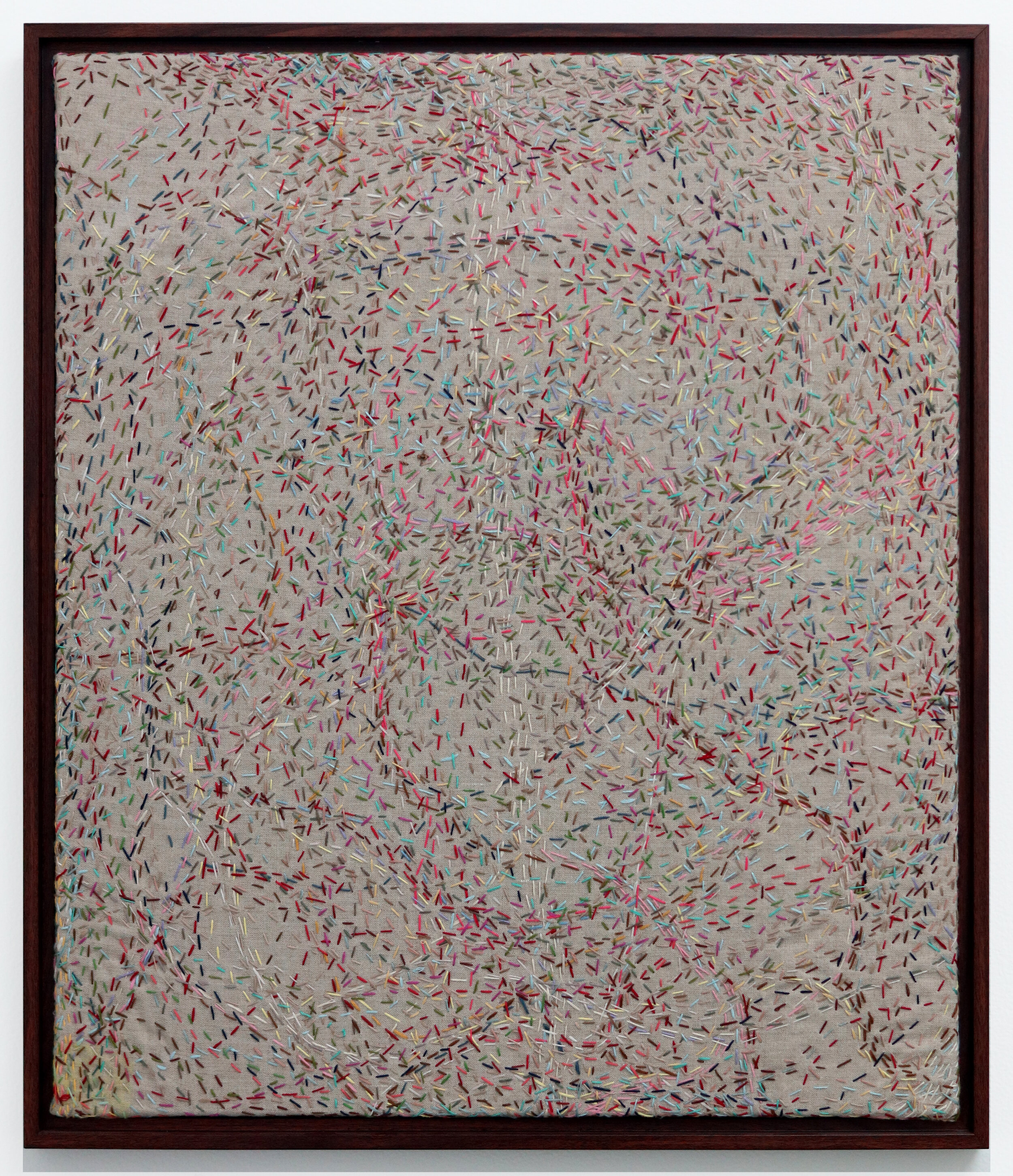
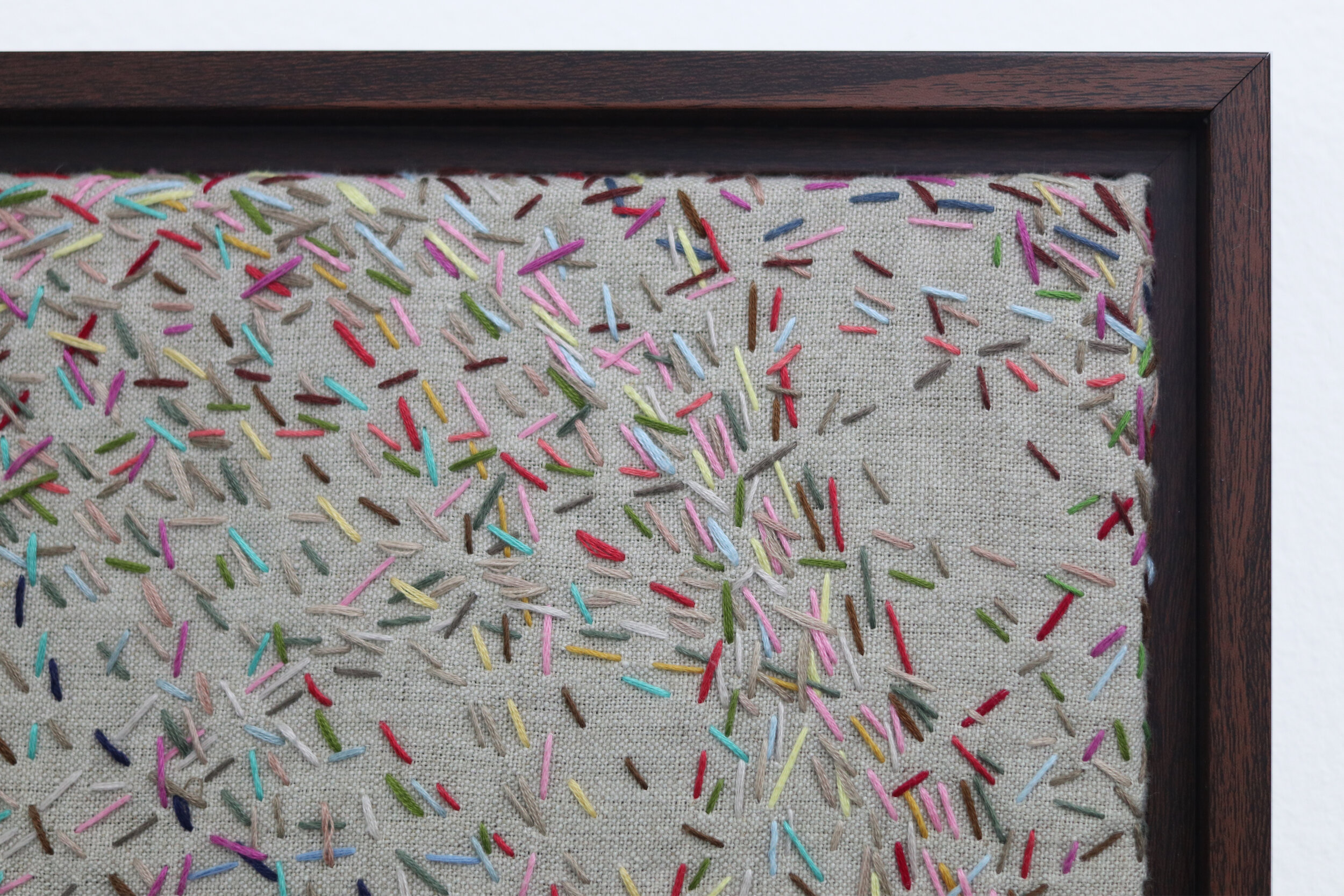
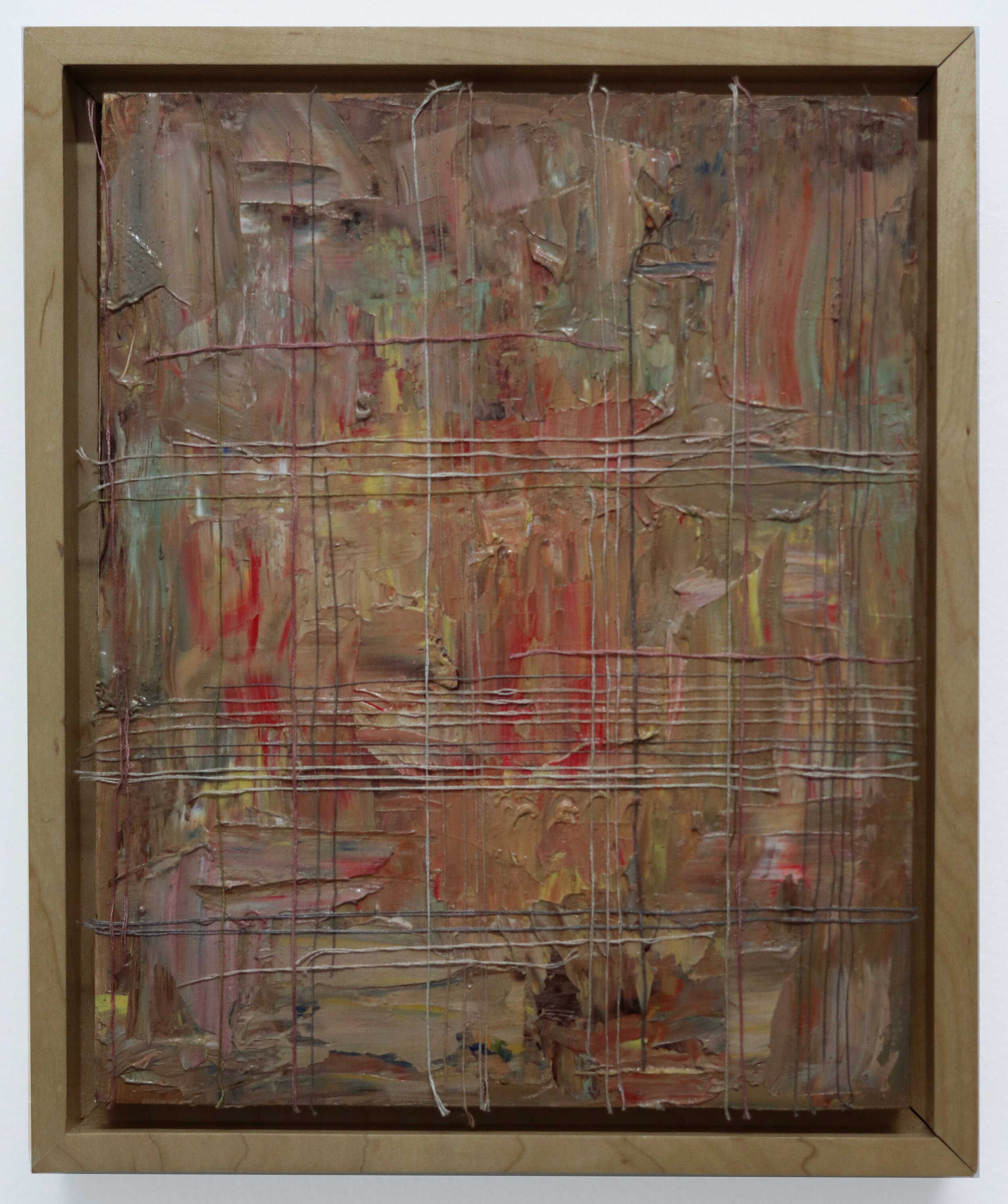
Liliya Lifanova's folded paintings exist as objects in their own right. Yet, it's not a human gaze that brings them to existence, but a touch. Painted on both sides, these pieces can be folded and stacked in a specific order. Or unfolded and presented in multiple combinations on a steel structure either on the wall or as a floor piece.
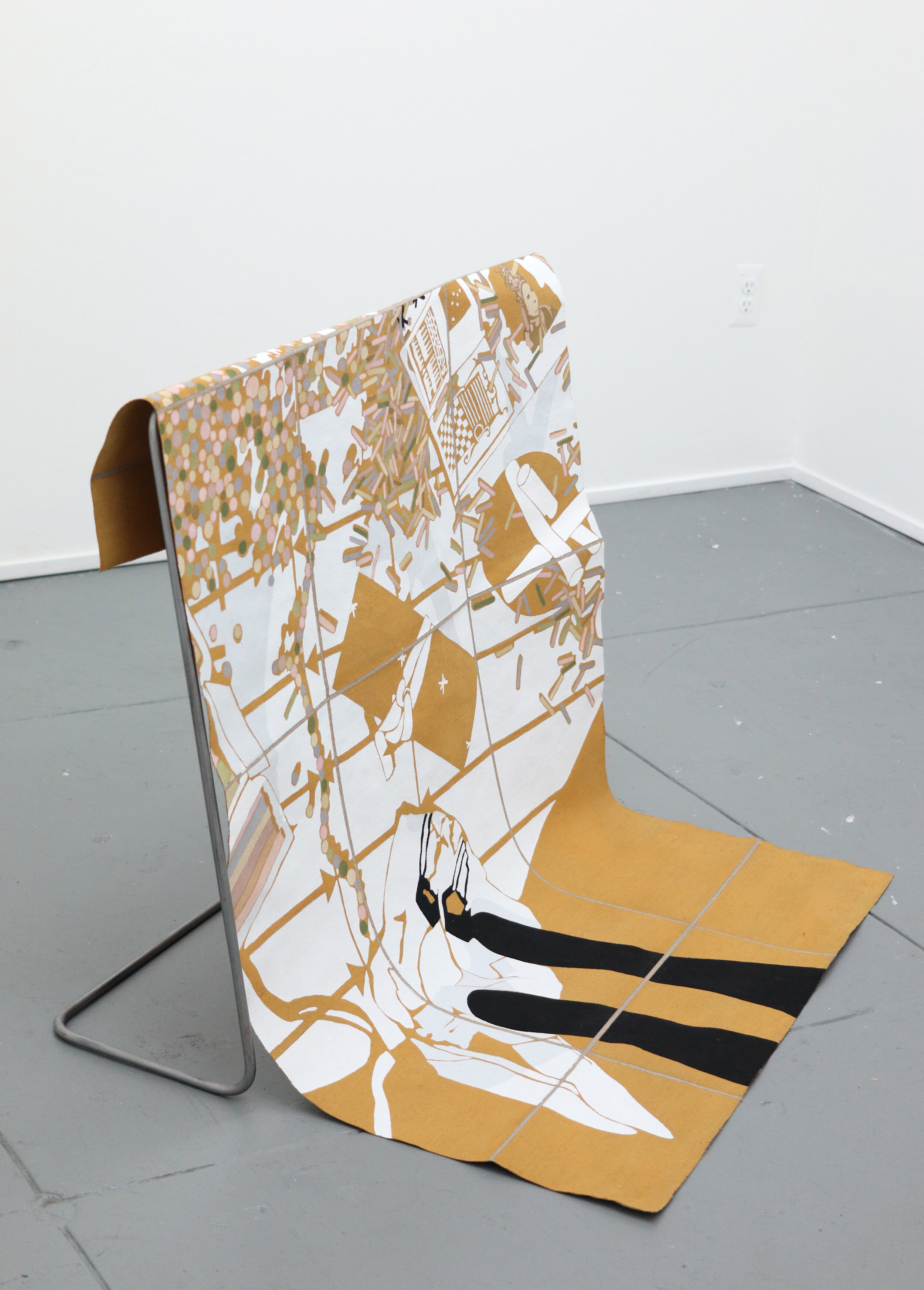
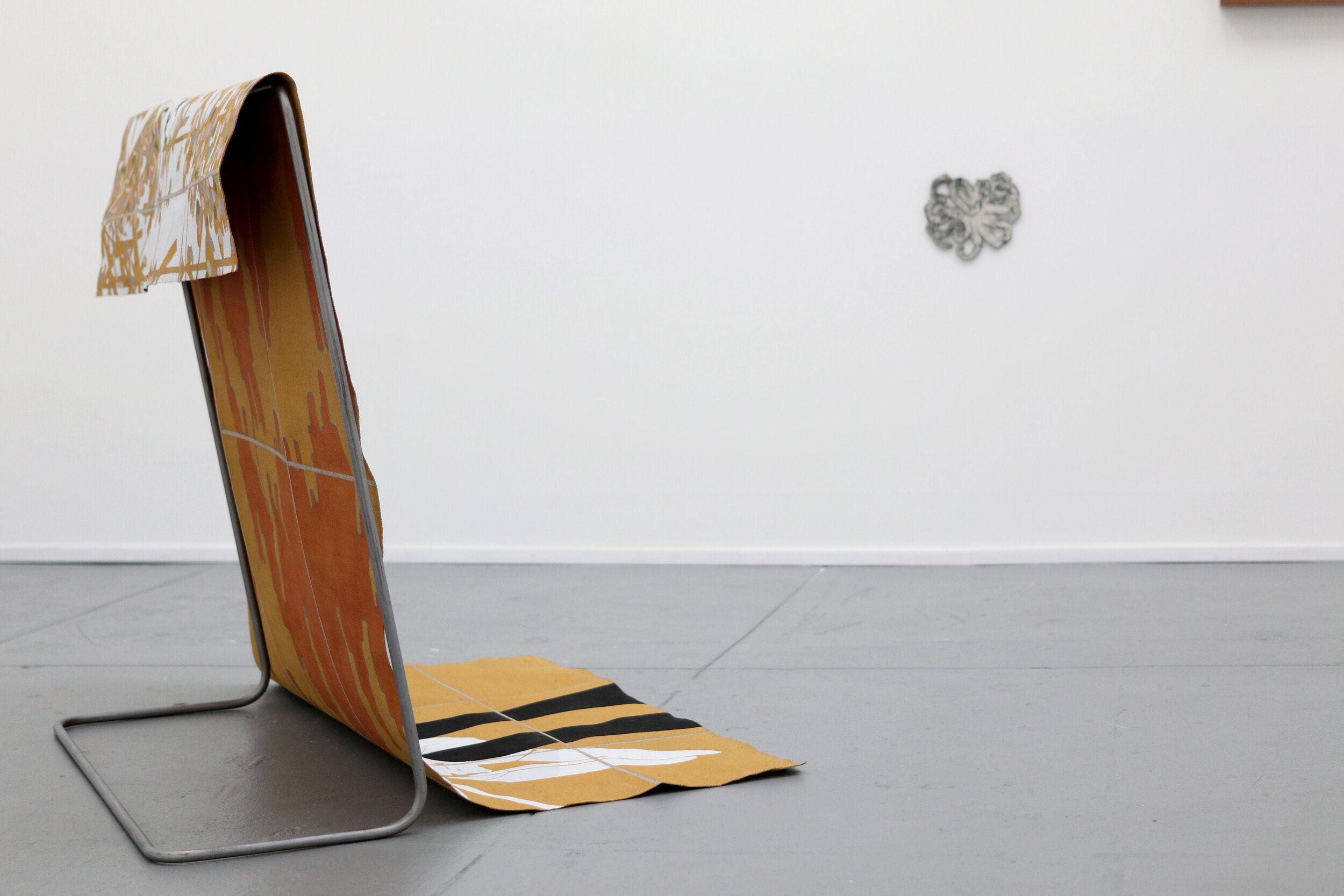
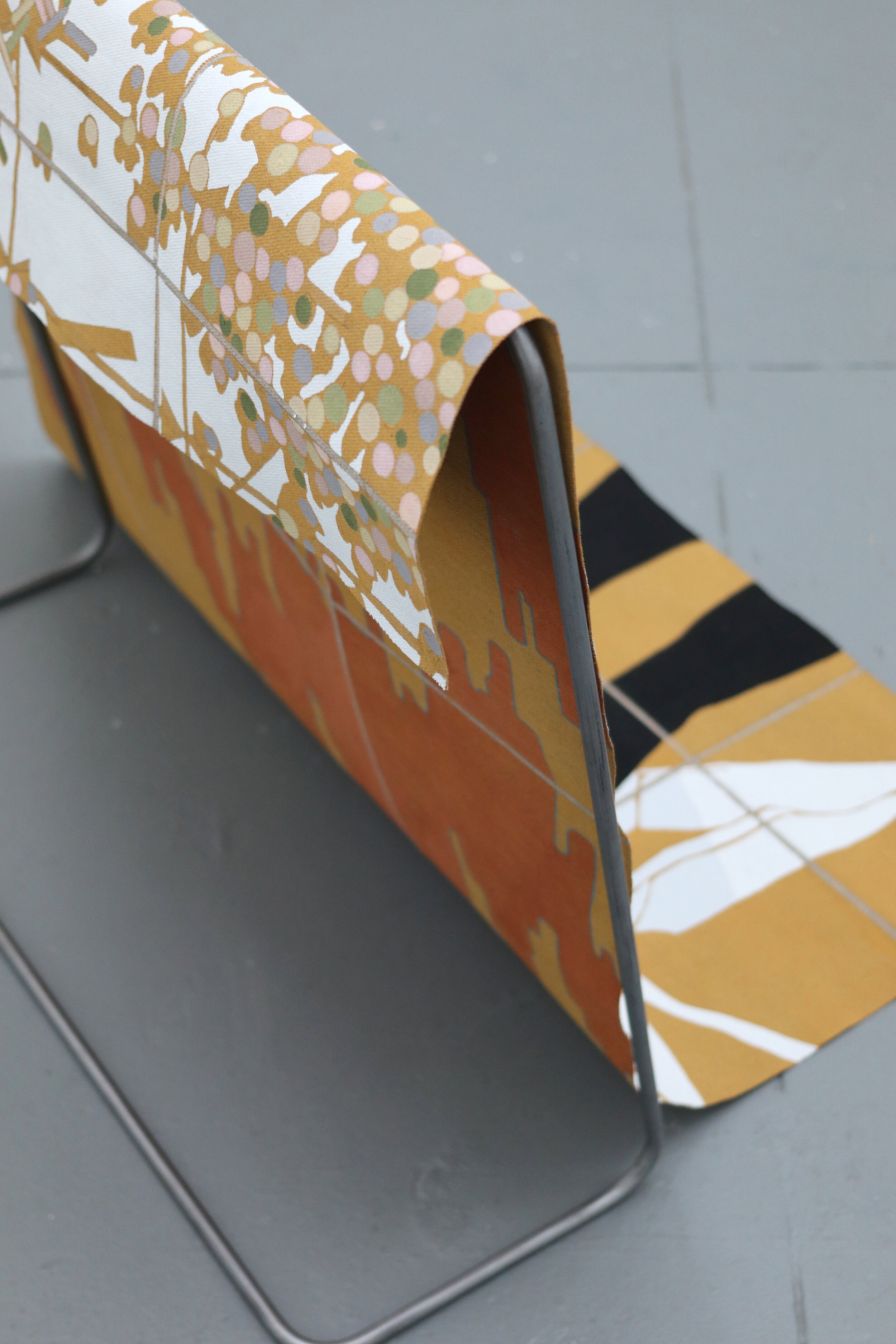
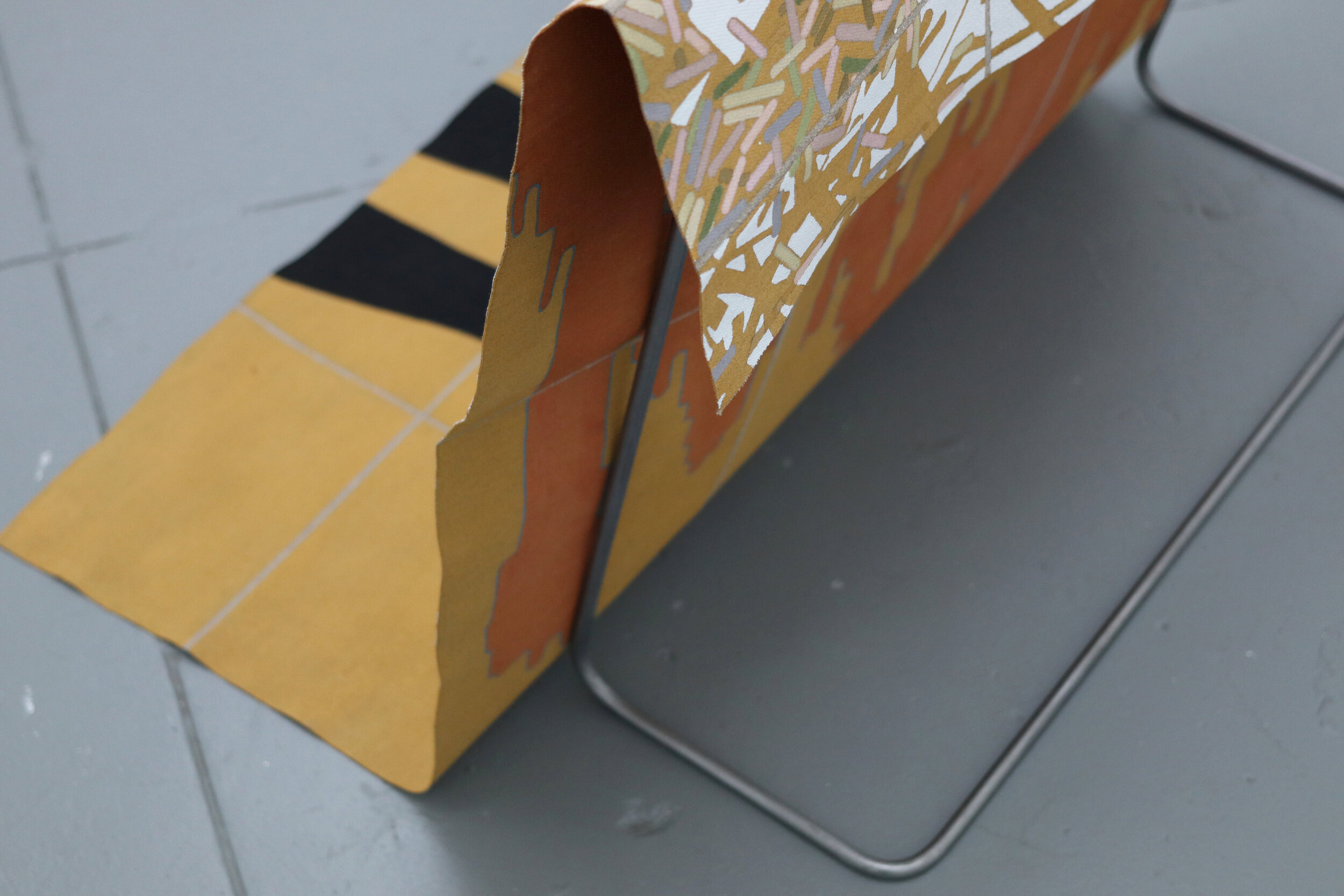
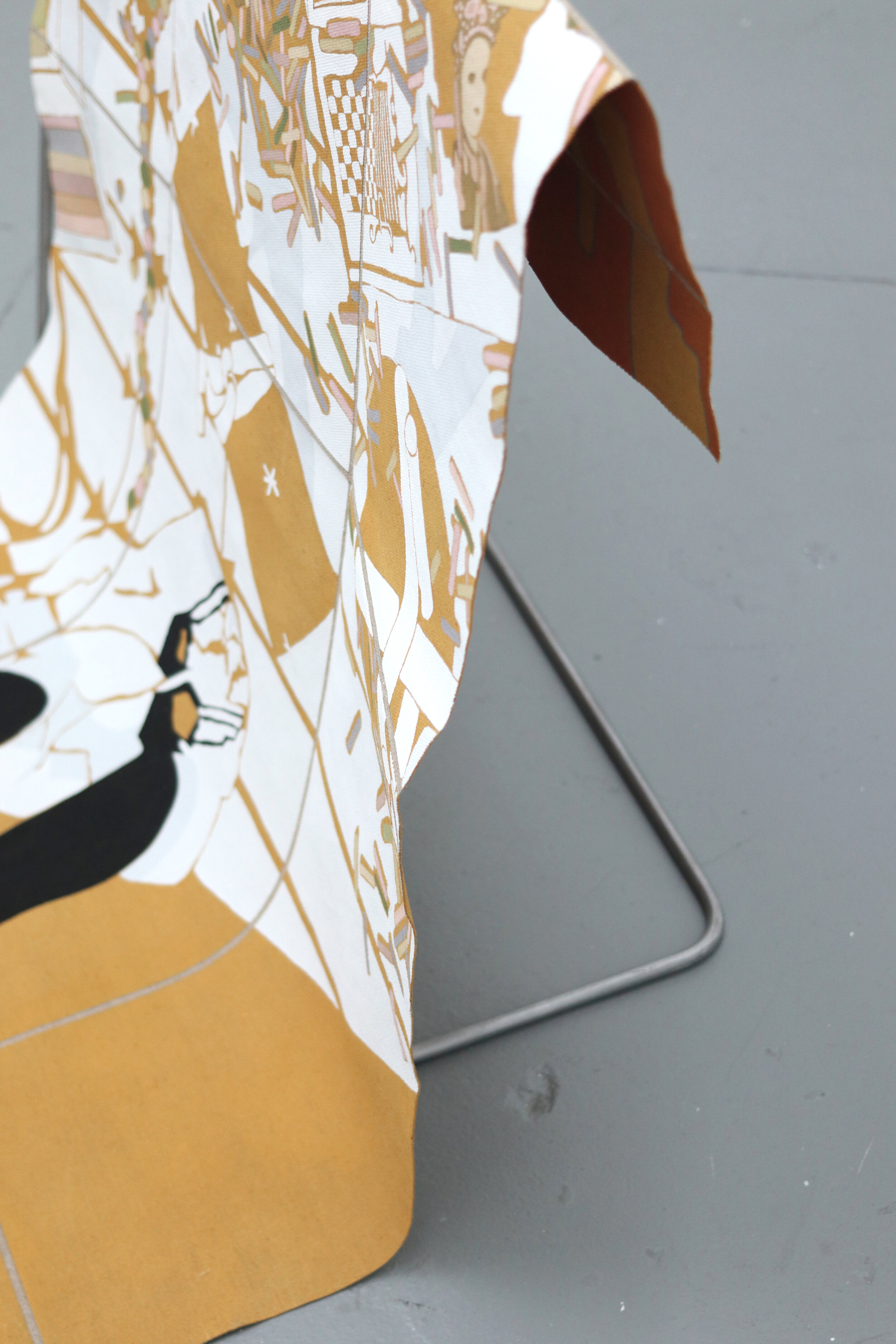

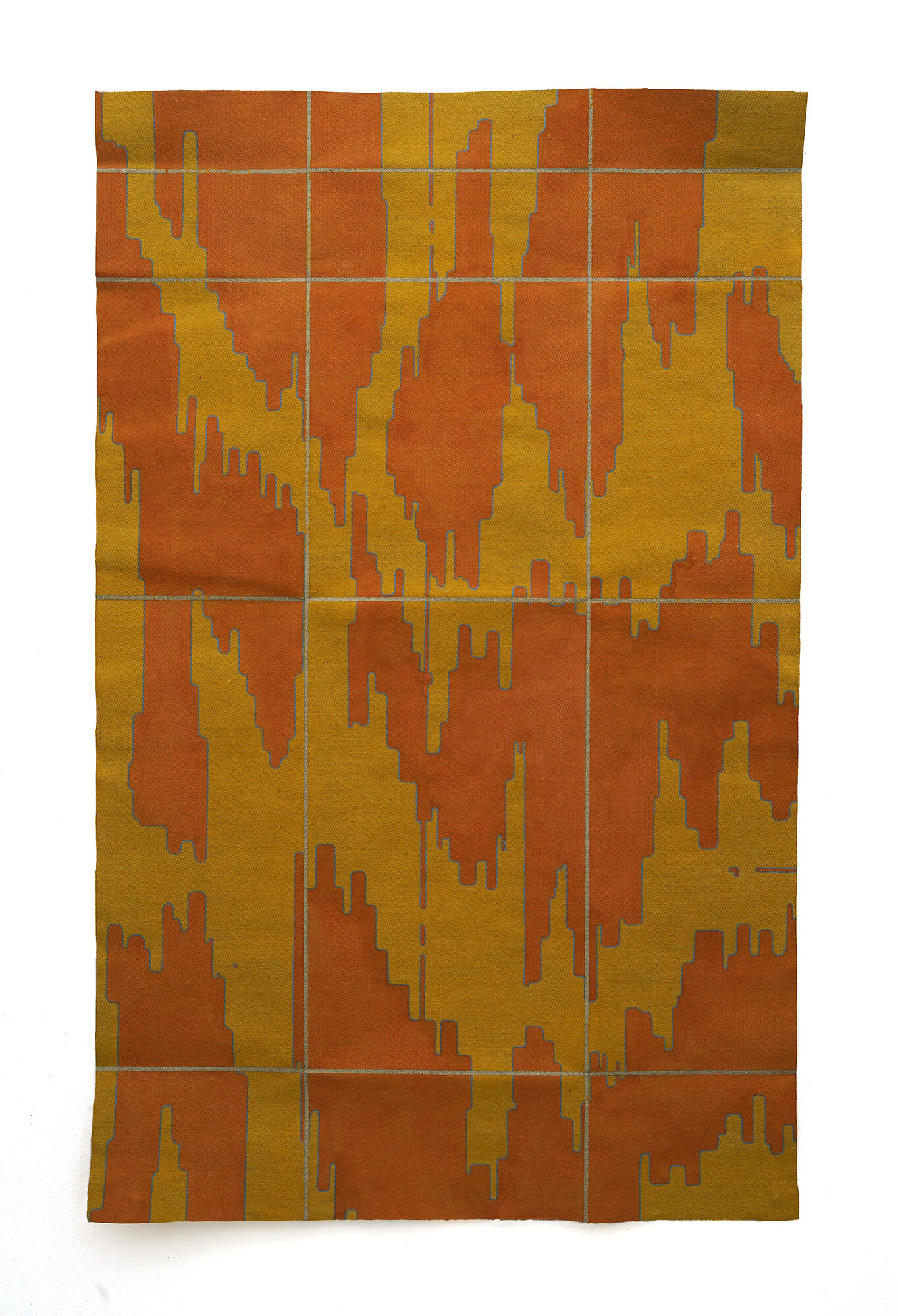

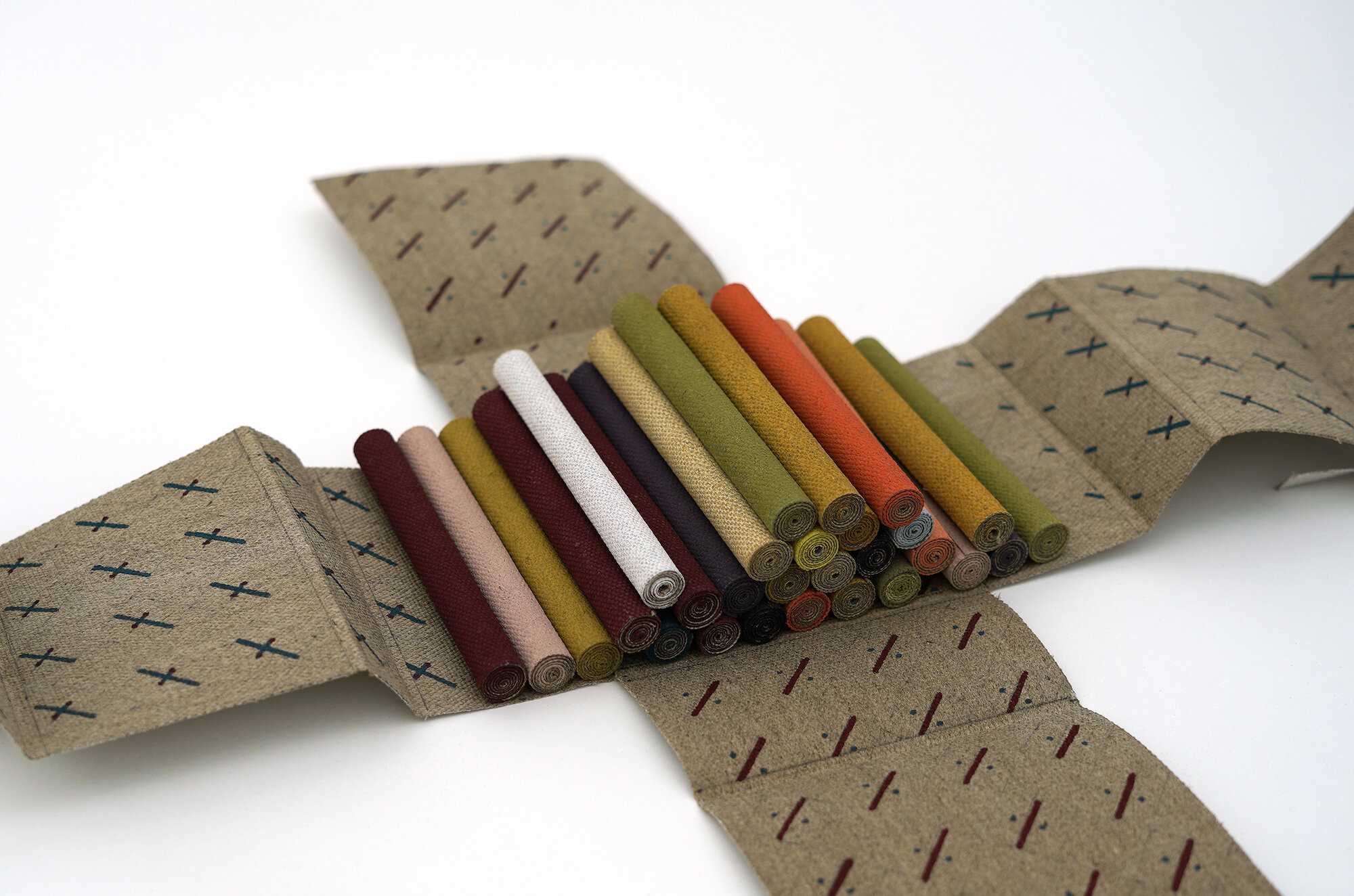
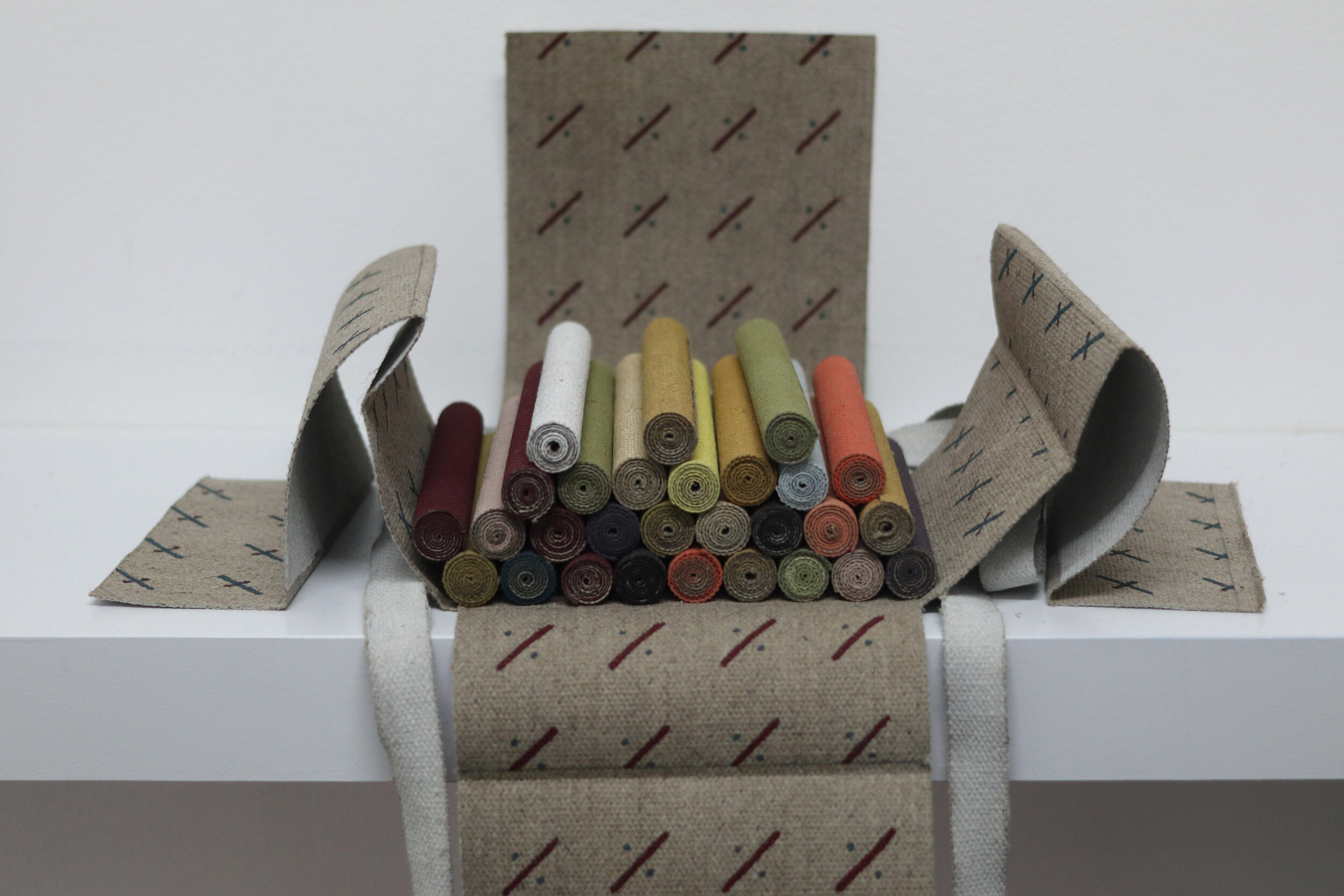
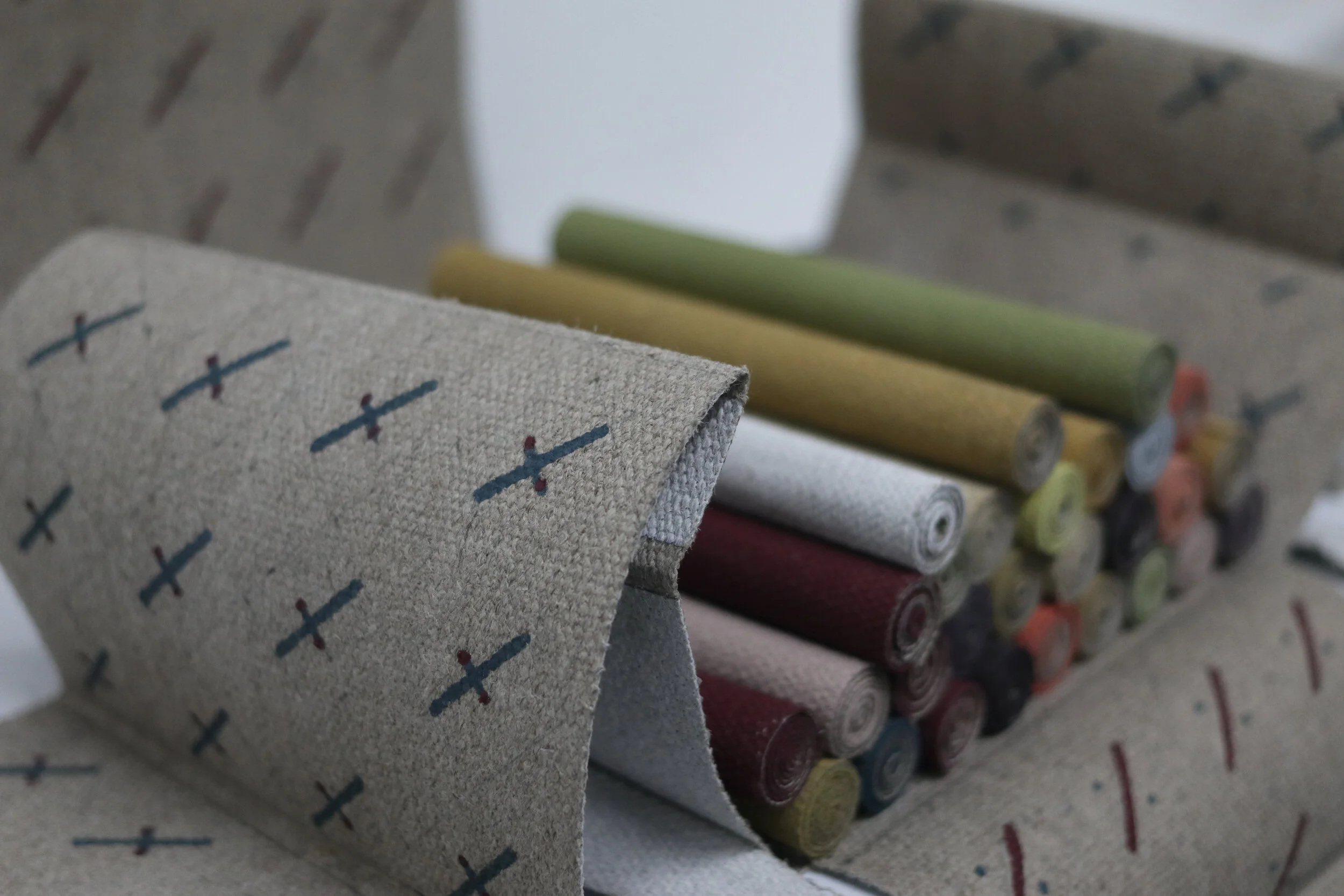
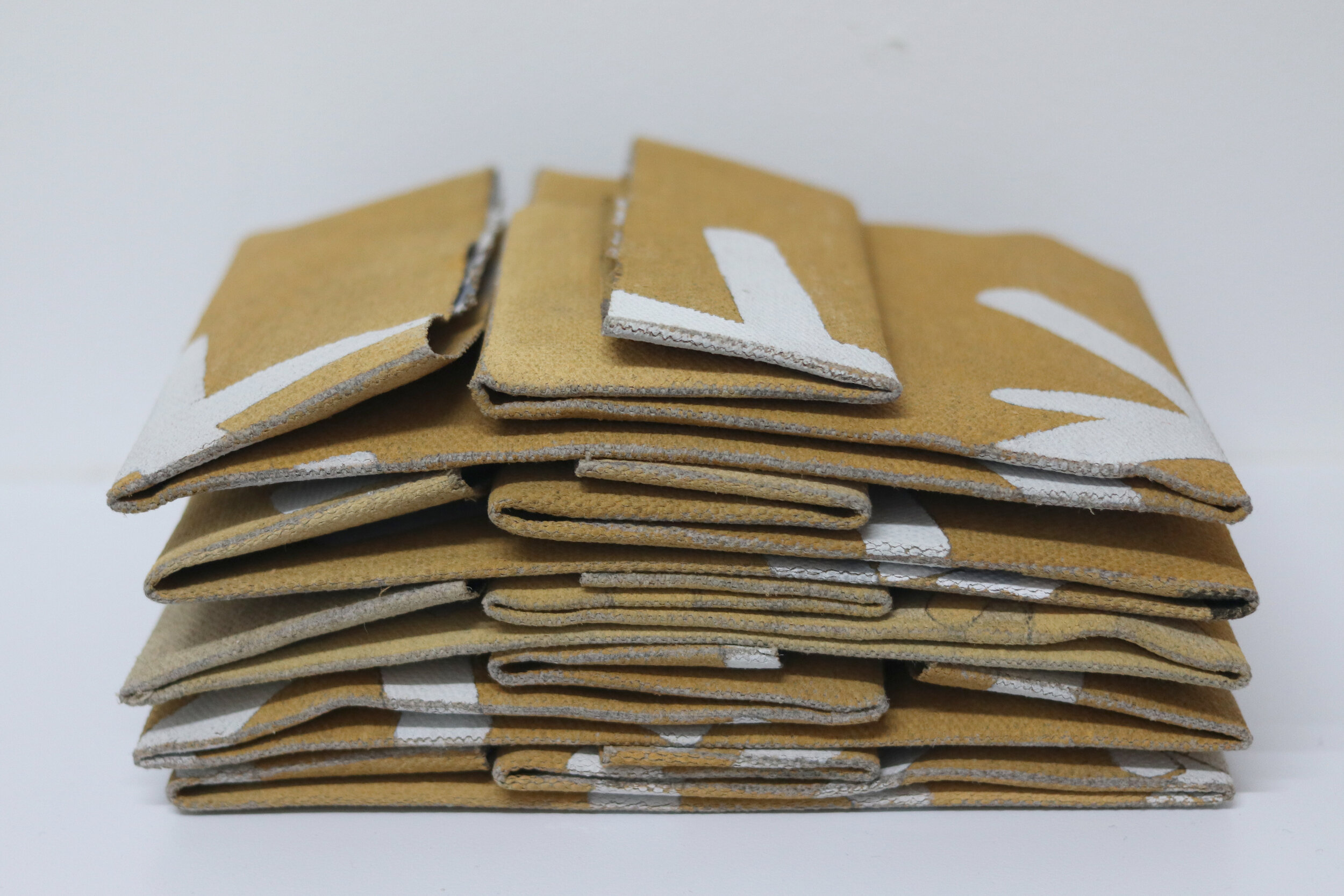
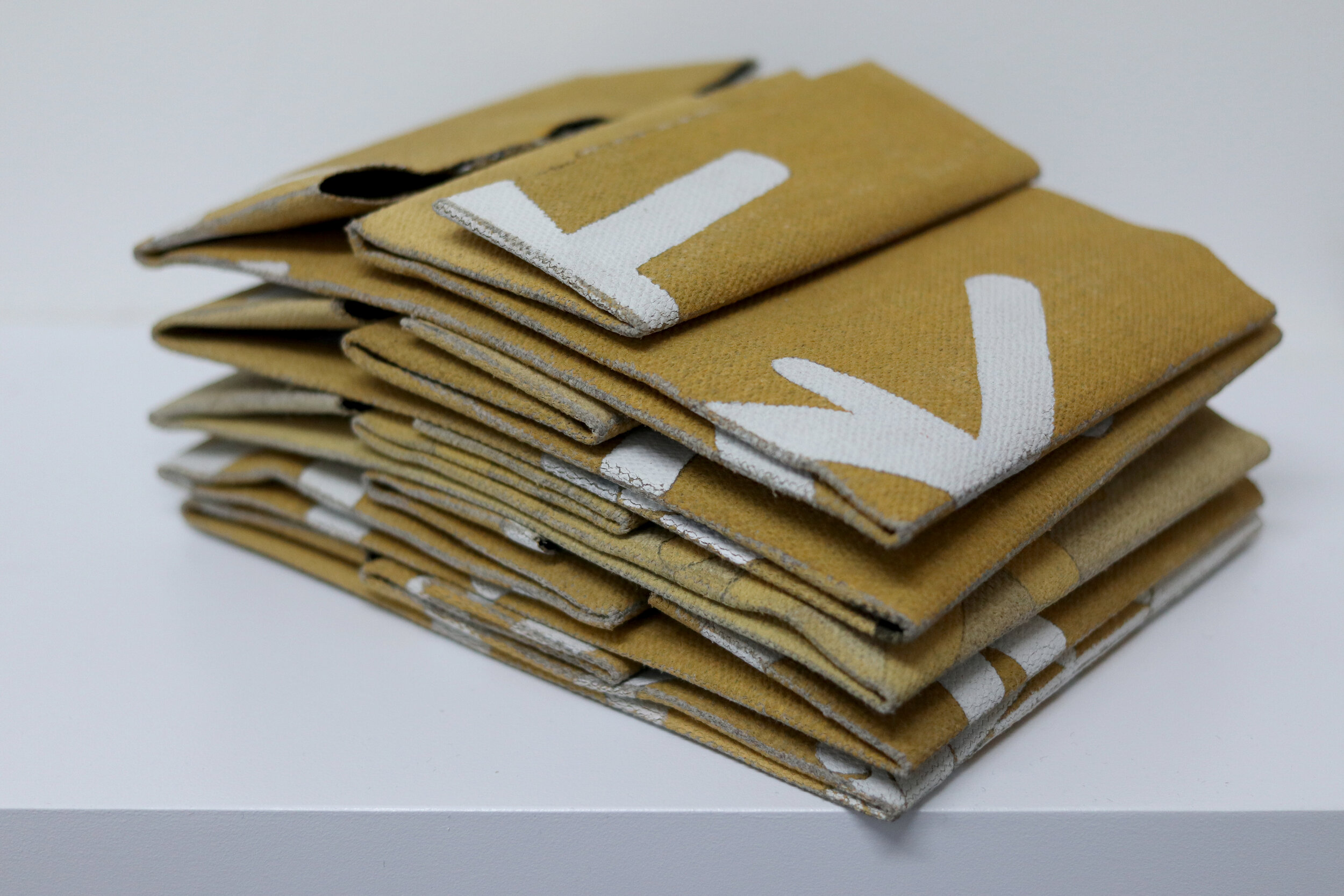
The works of Spandita Malik shifts the role of the artist and the model. They exist as a joint effort of their gaze and manual labor. Malik photographs the woman in India in the communities where the only activity they are allowed to is embroidery and other domestic chores. The images are transferred on the fabric used by these women for embroidery. They are asked to adorn them the way they choose and want to be represented.
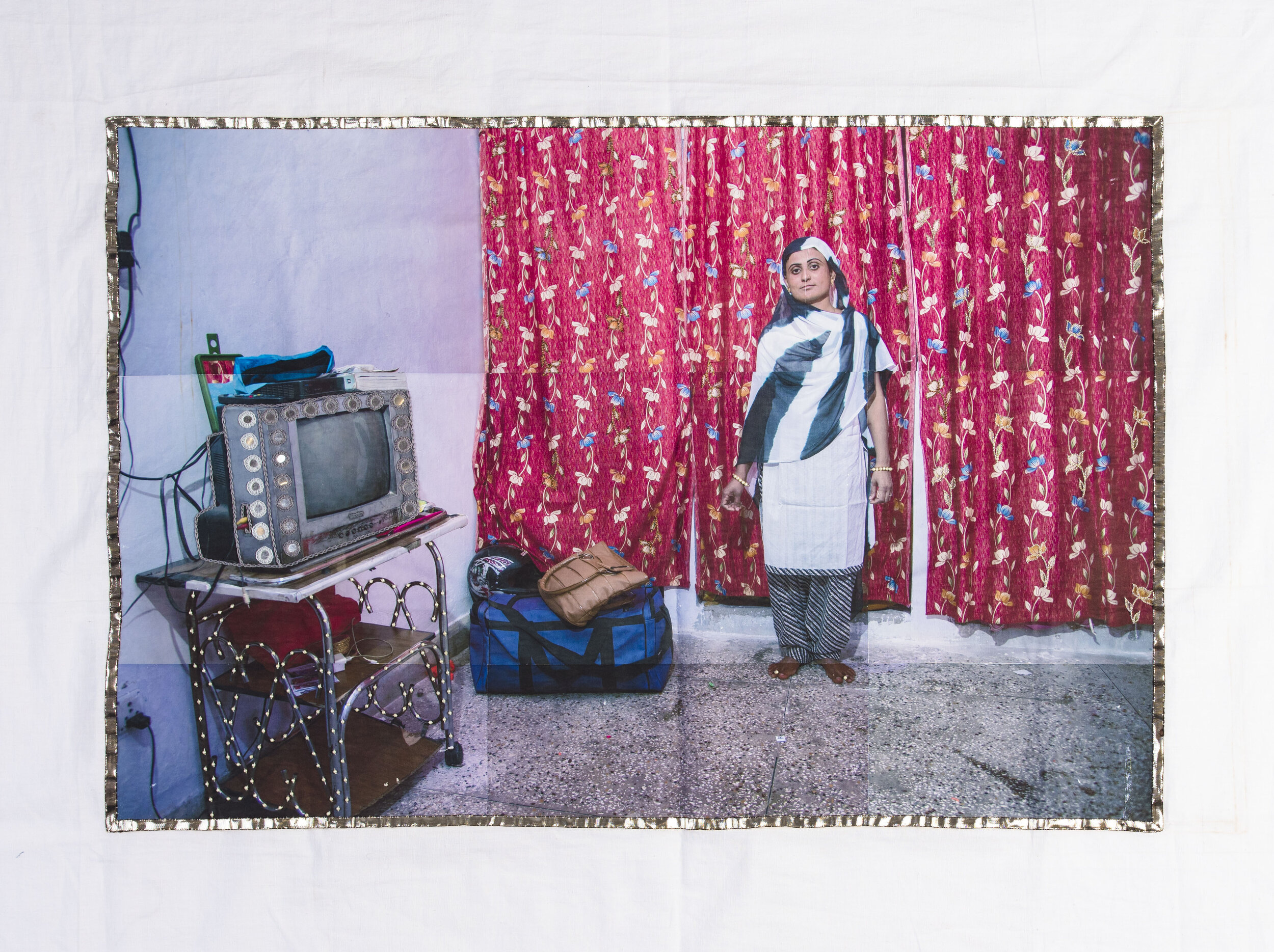
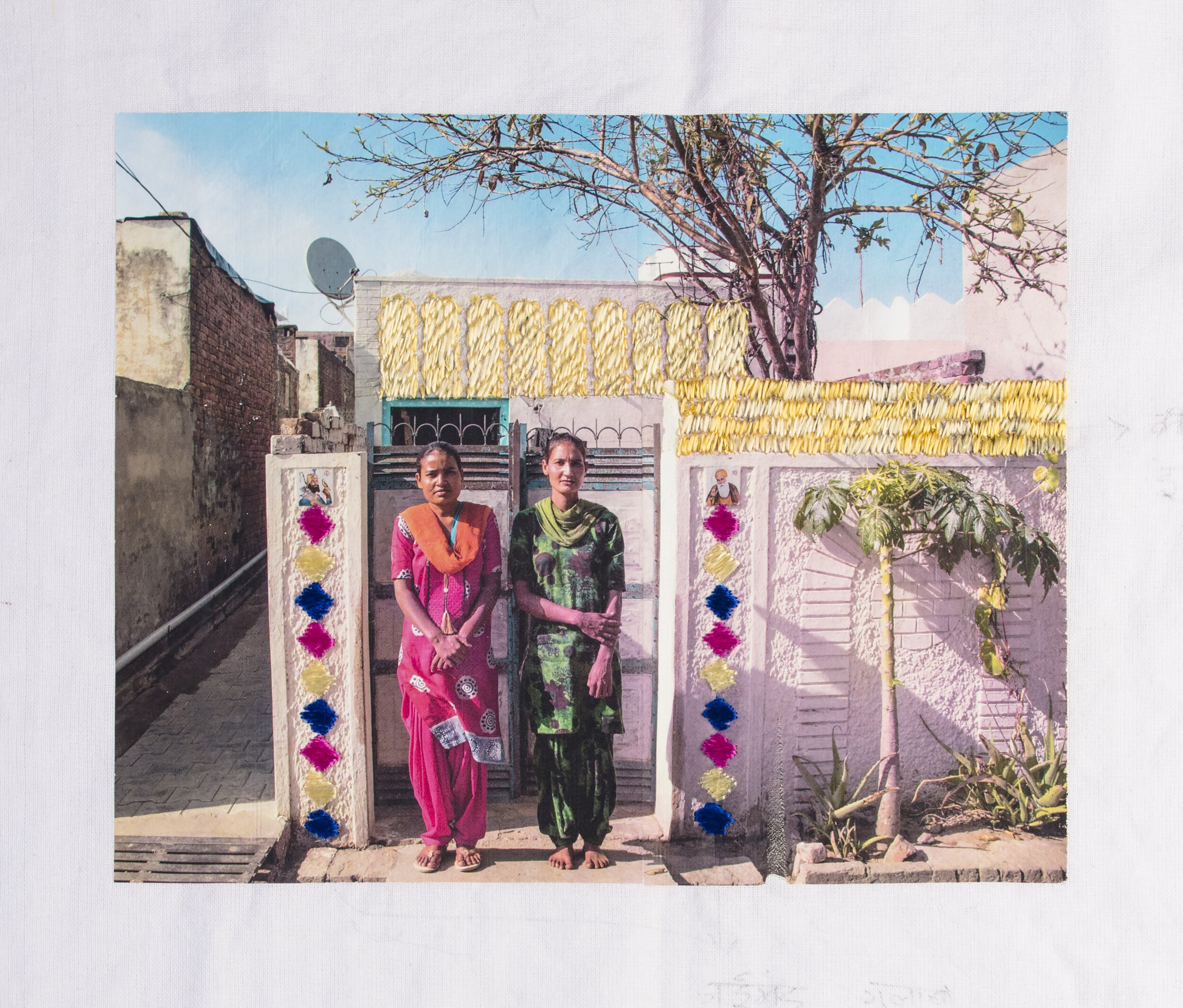
Jaye Moon has been exploring fashion items such as handbags, scarves, and mirrors historically considered as “feminine” in the sense of “fragile.” Yet in her work they acquire the quality of the symbols of feminist power, as portals of communication and accessibility through quotes of iconic feminist thinkers and writers transcribed in Braille and engraved on the surfaces of these objects.
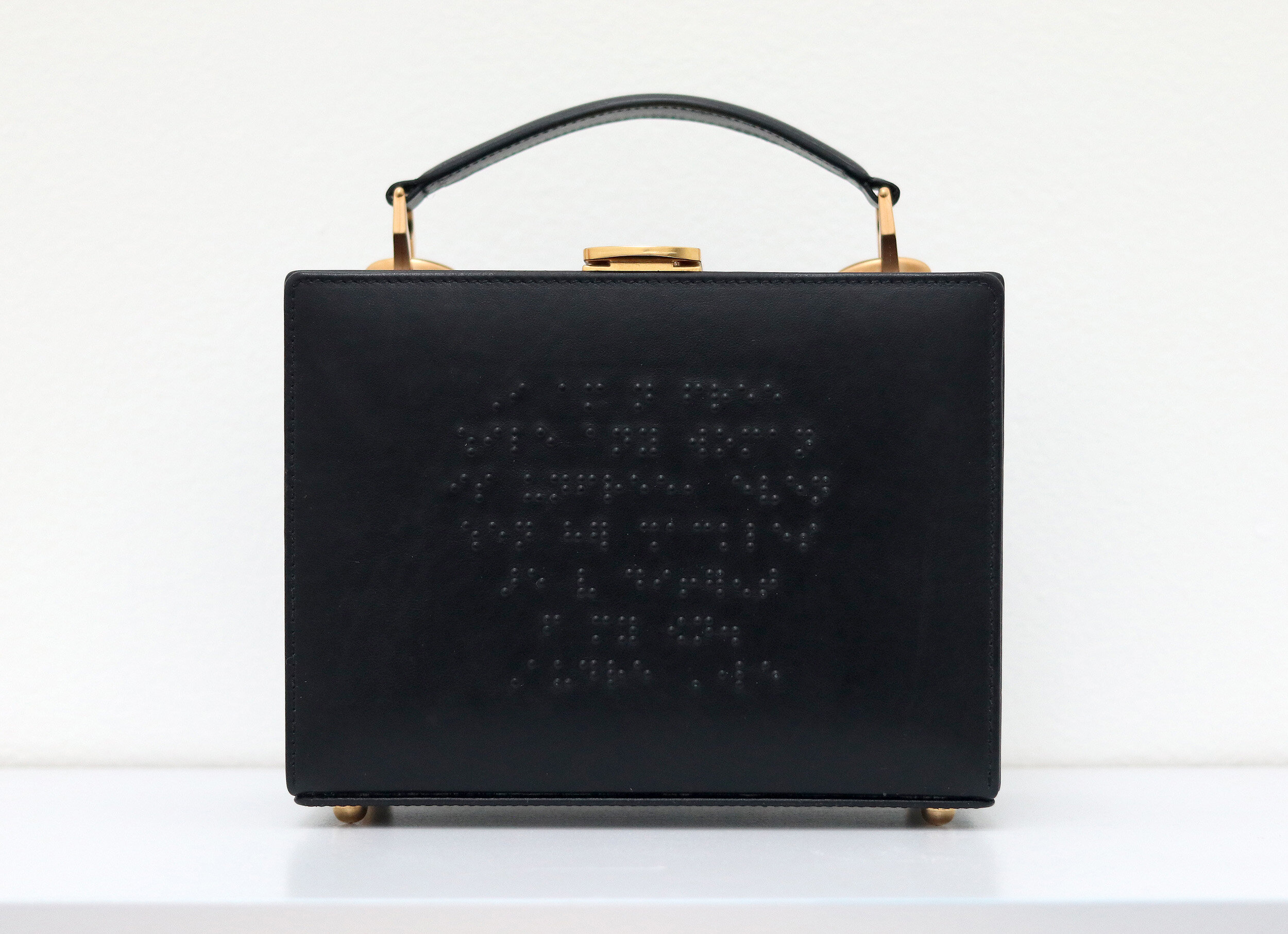

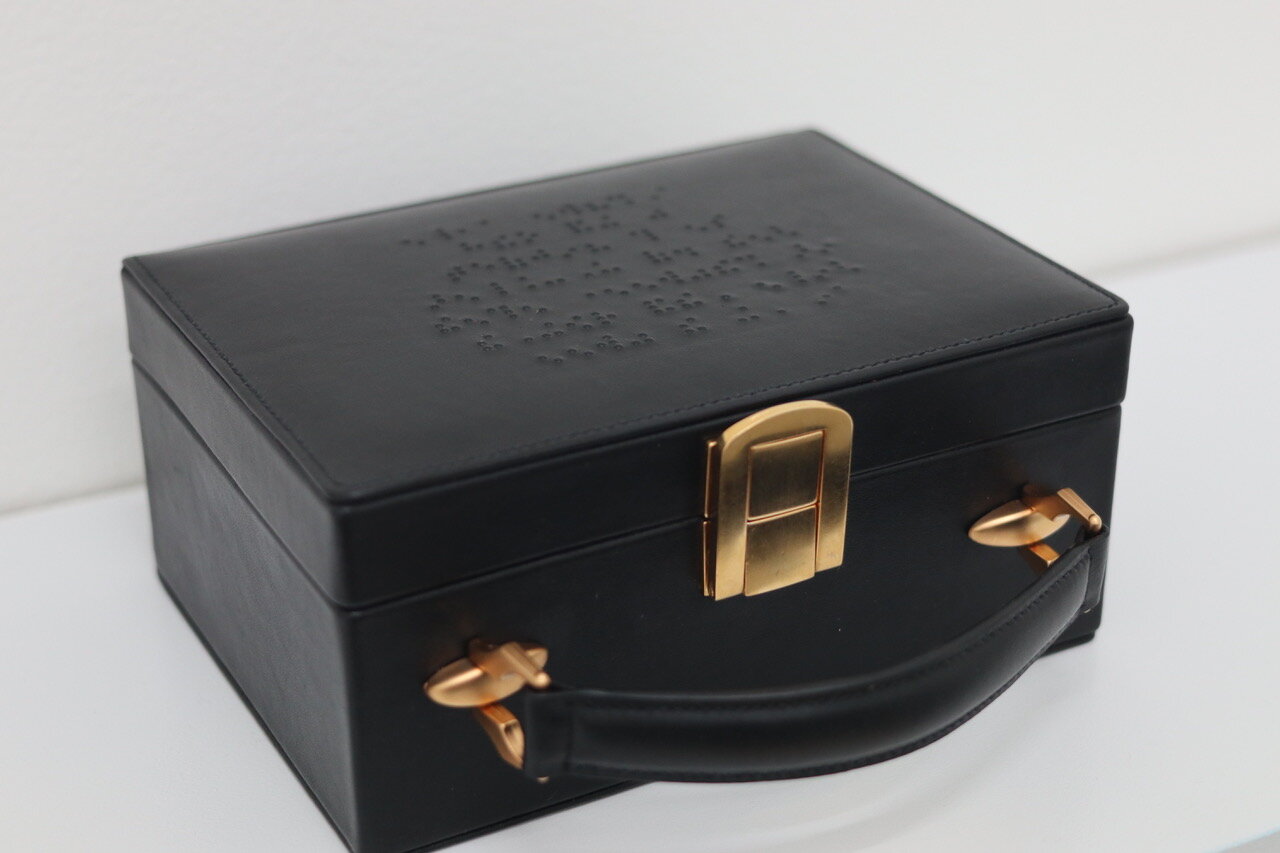
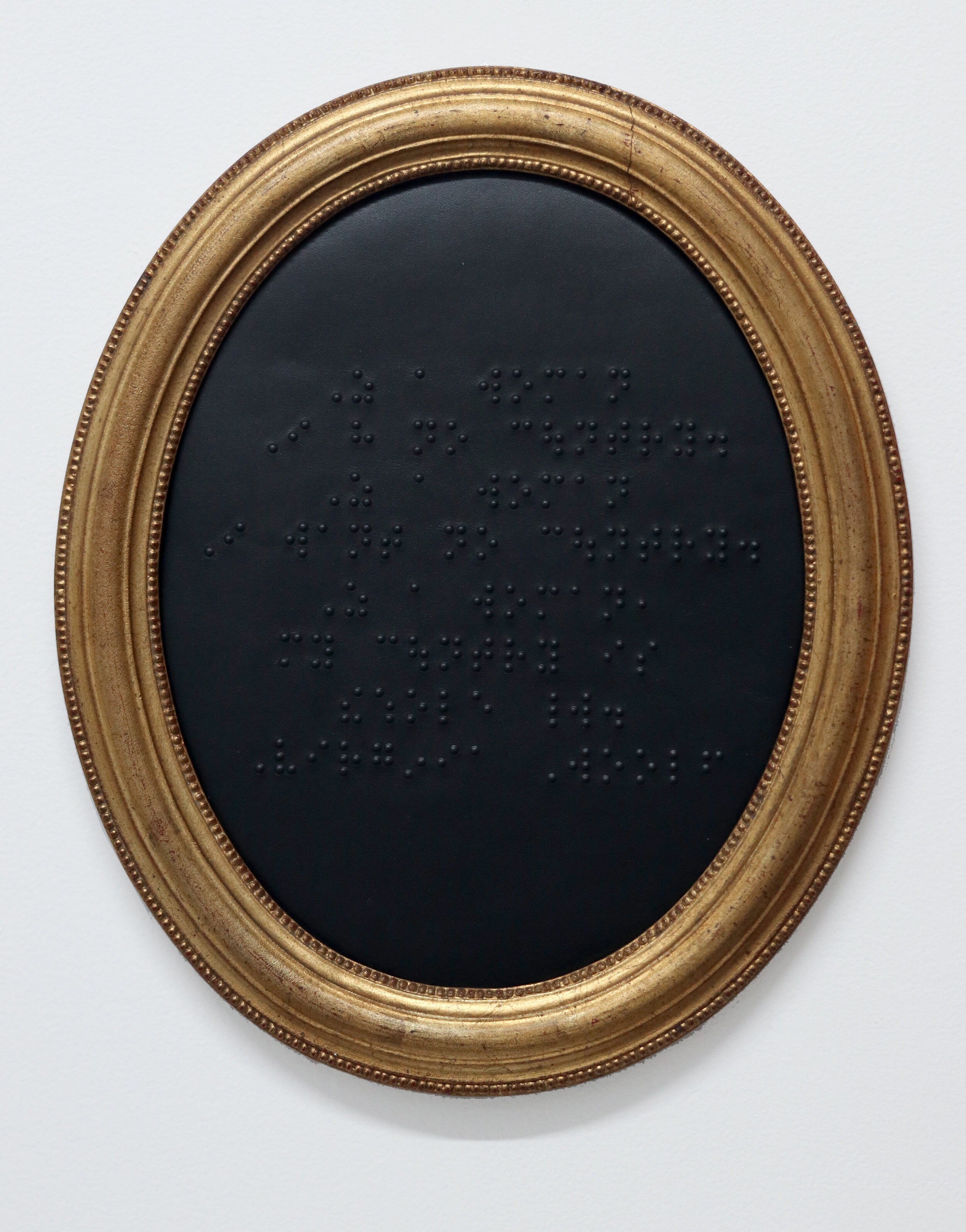

Photographs of Elizabeth Moran depict alarmingly emptied out, Baroque-style darkened interiors. They happen to be the settings where objects and the actions of desire are fabricated: production set-ups of the former porn production house kink.com. Moran's bookend objects for the "Still-Life" explore another kind of invisible touch – now almost wholly erased labor of the first female fact-checkers for Times Magazine obtained through Moran's research in New York Public Library, the site of the study of these first fact-checkers as well.
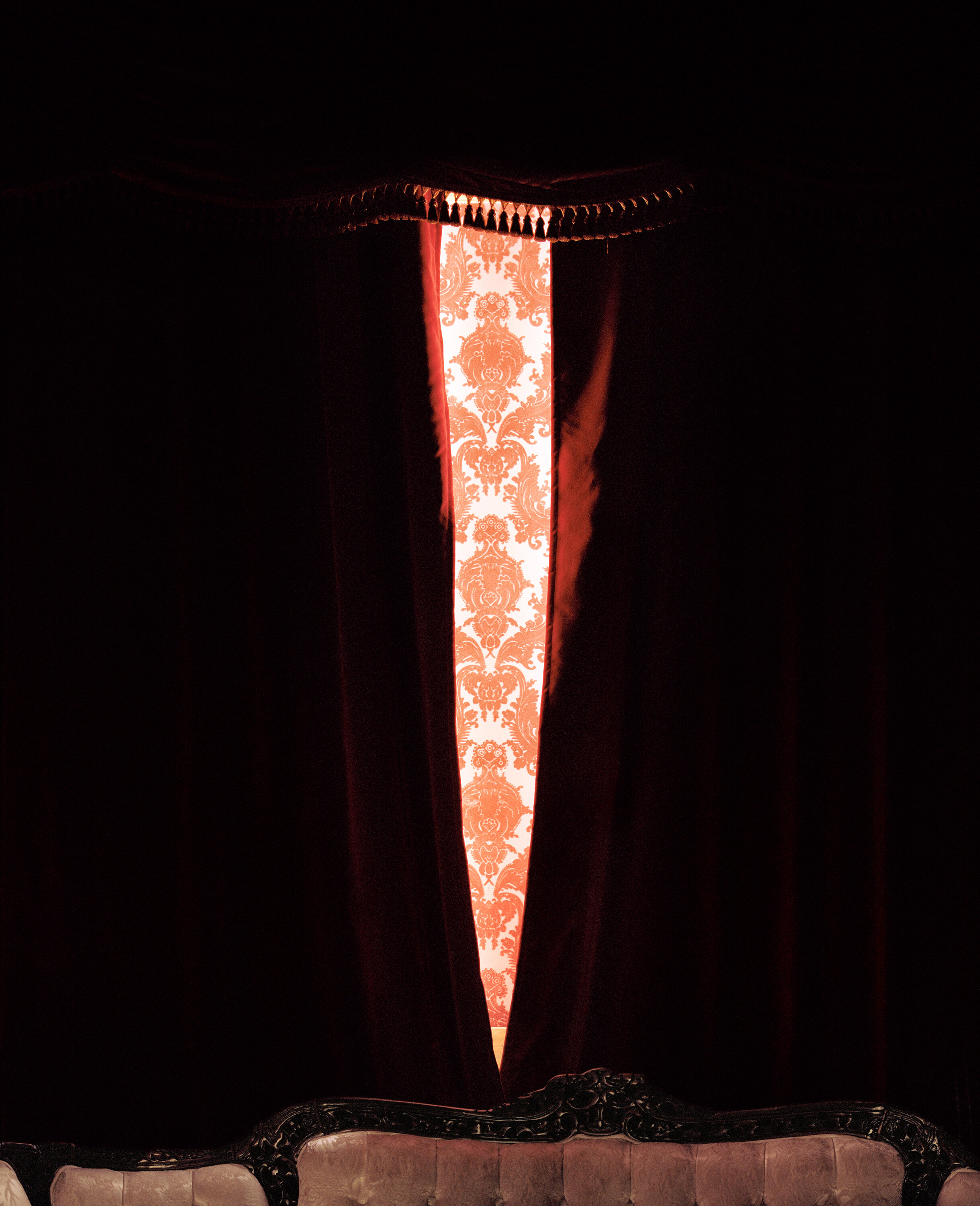
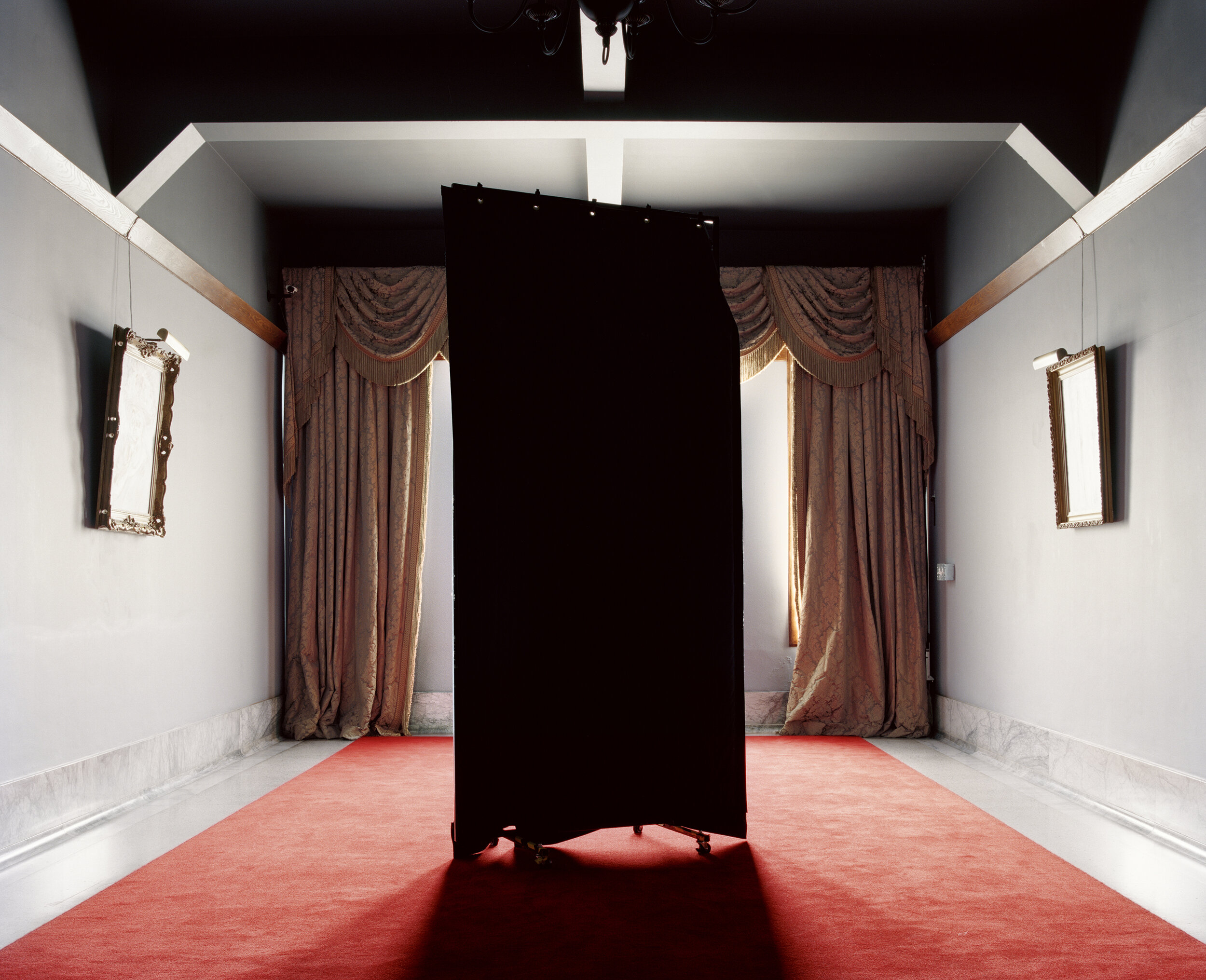
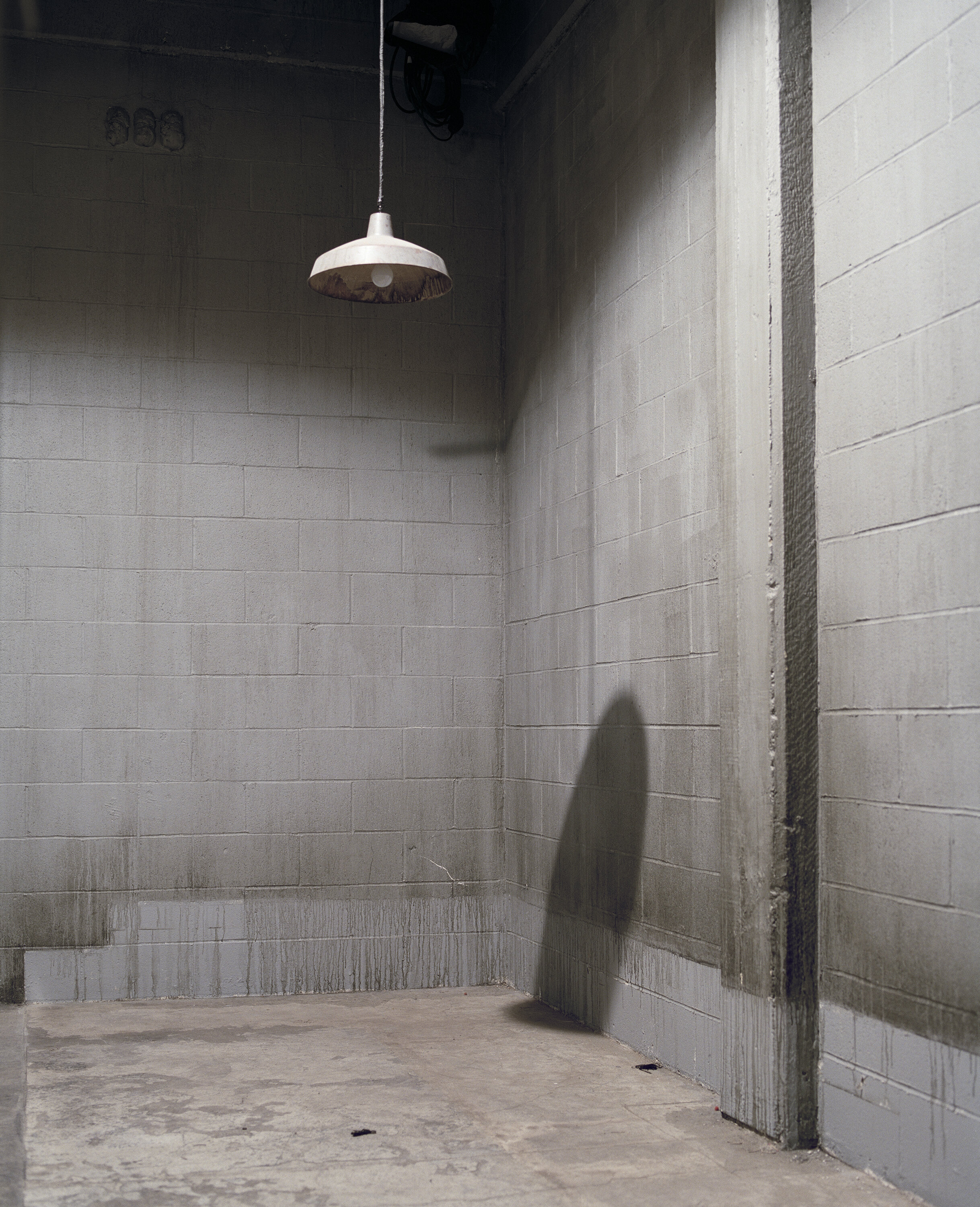
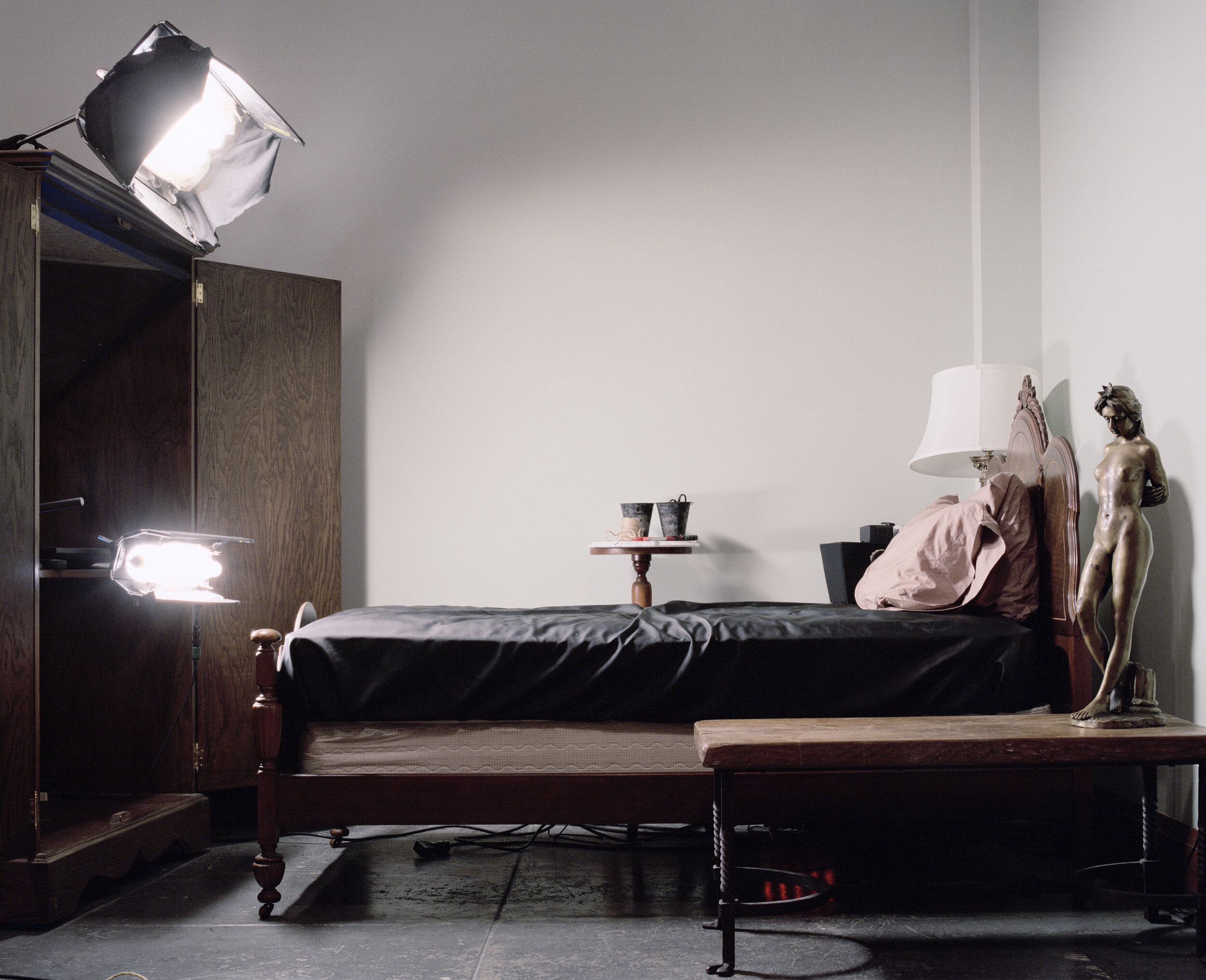
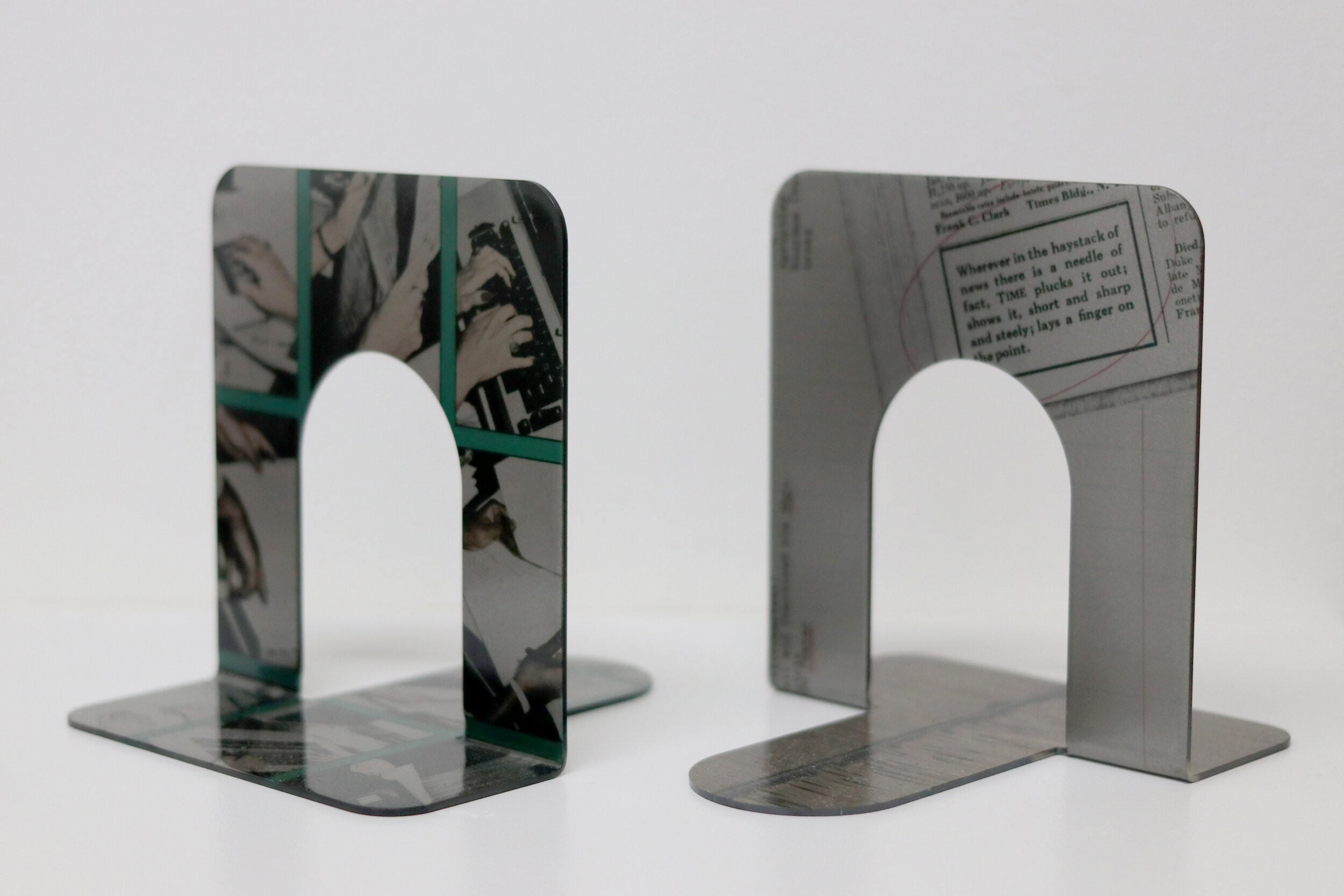
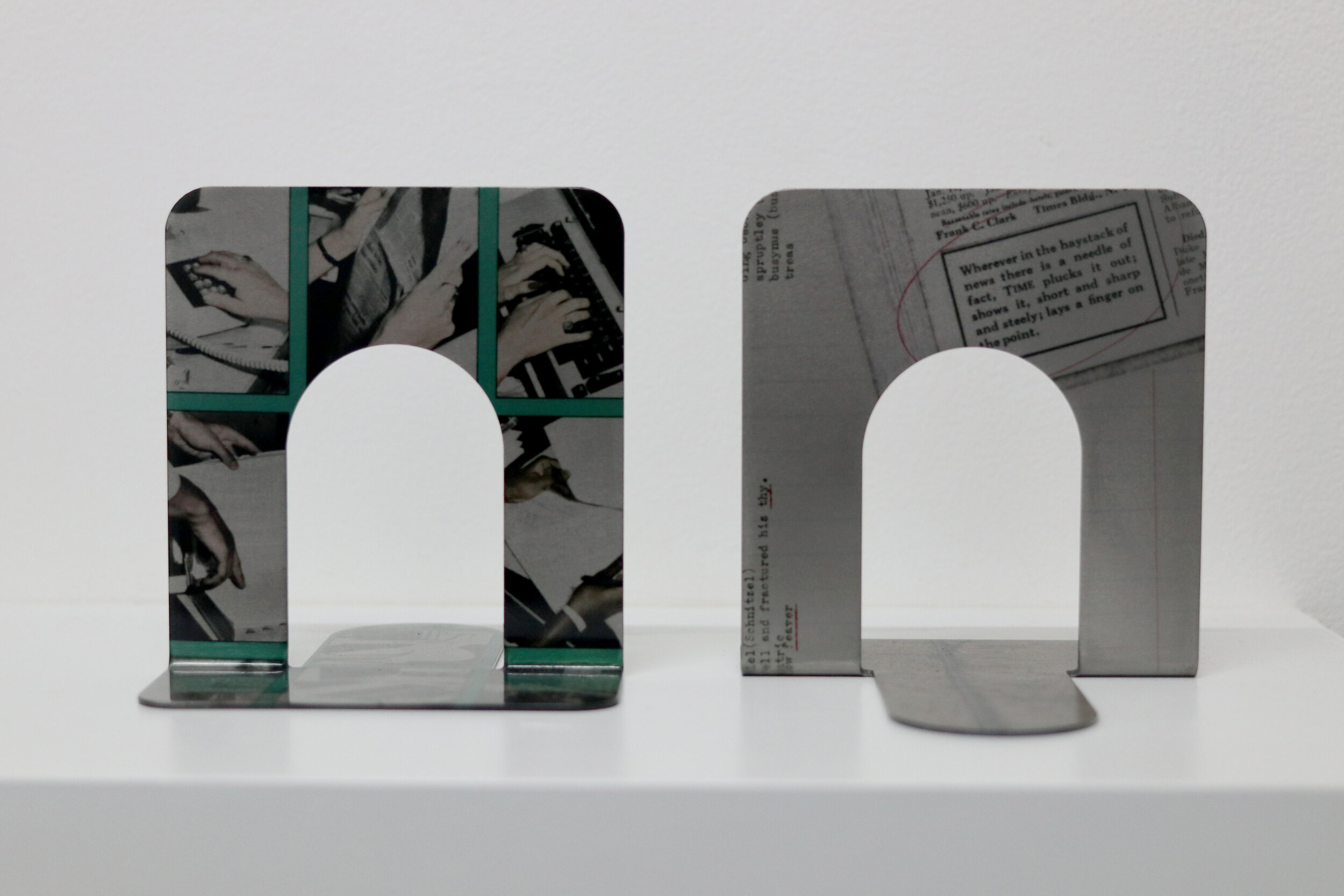
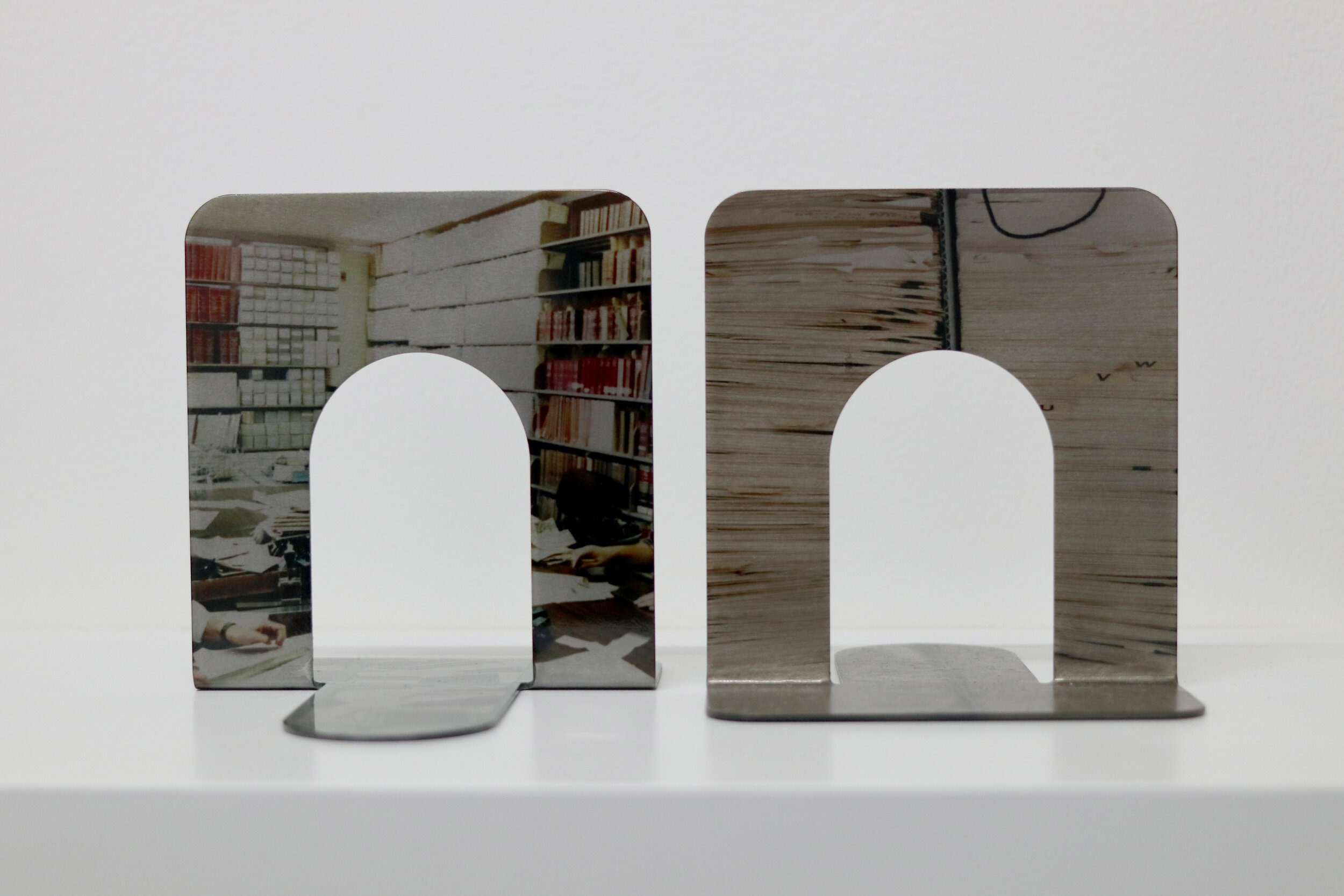
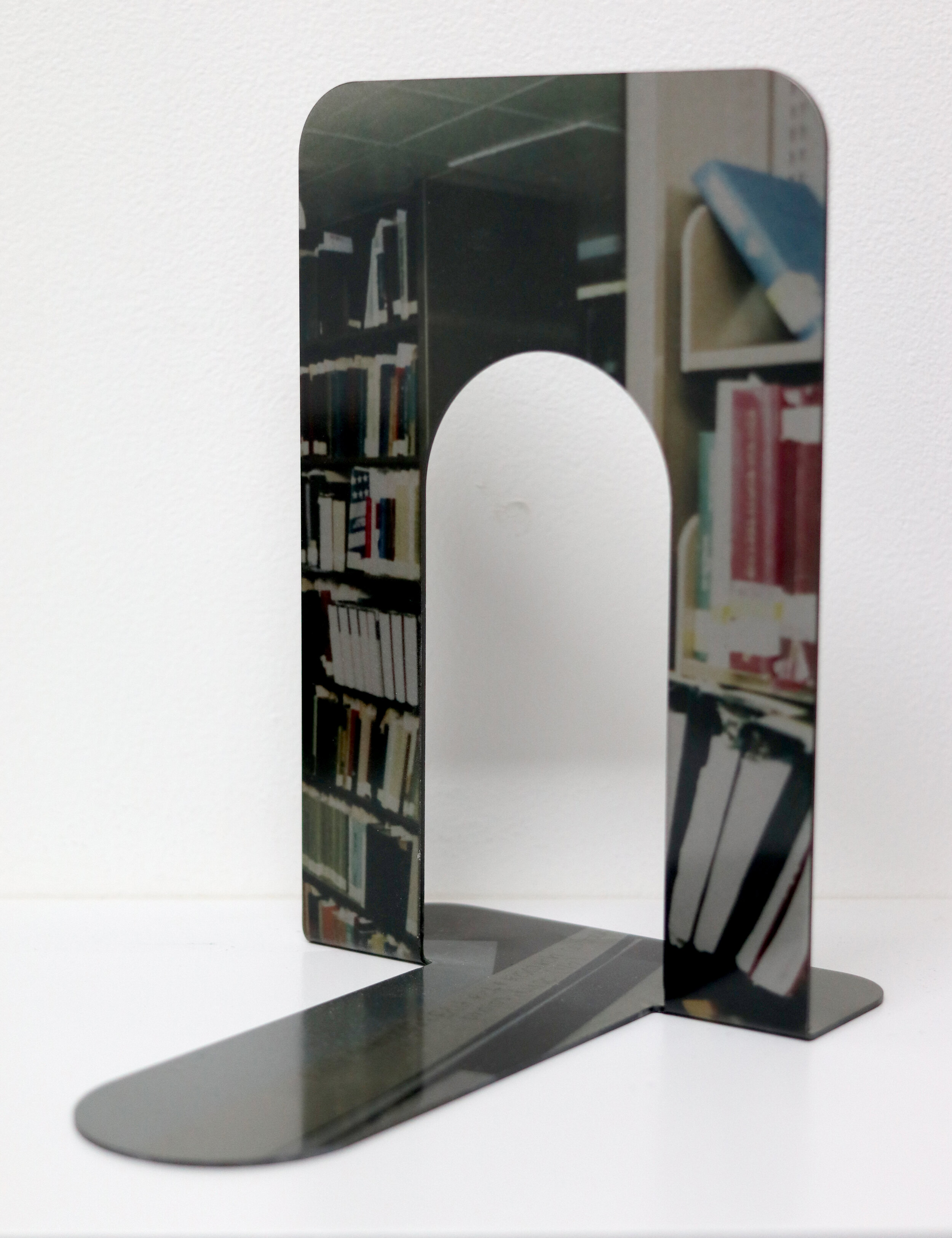
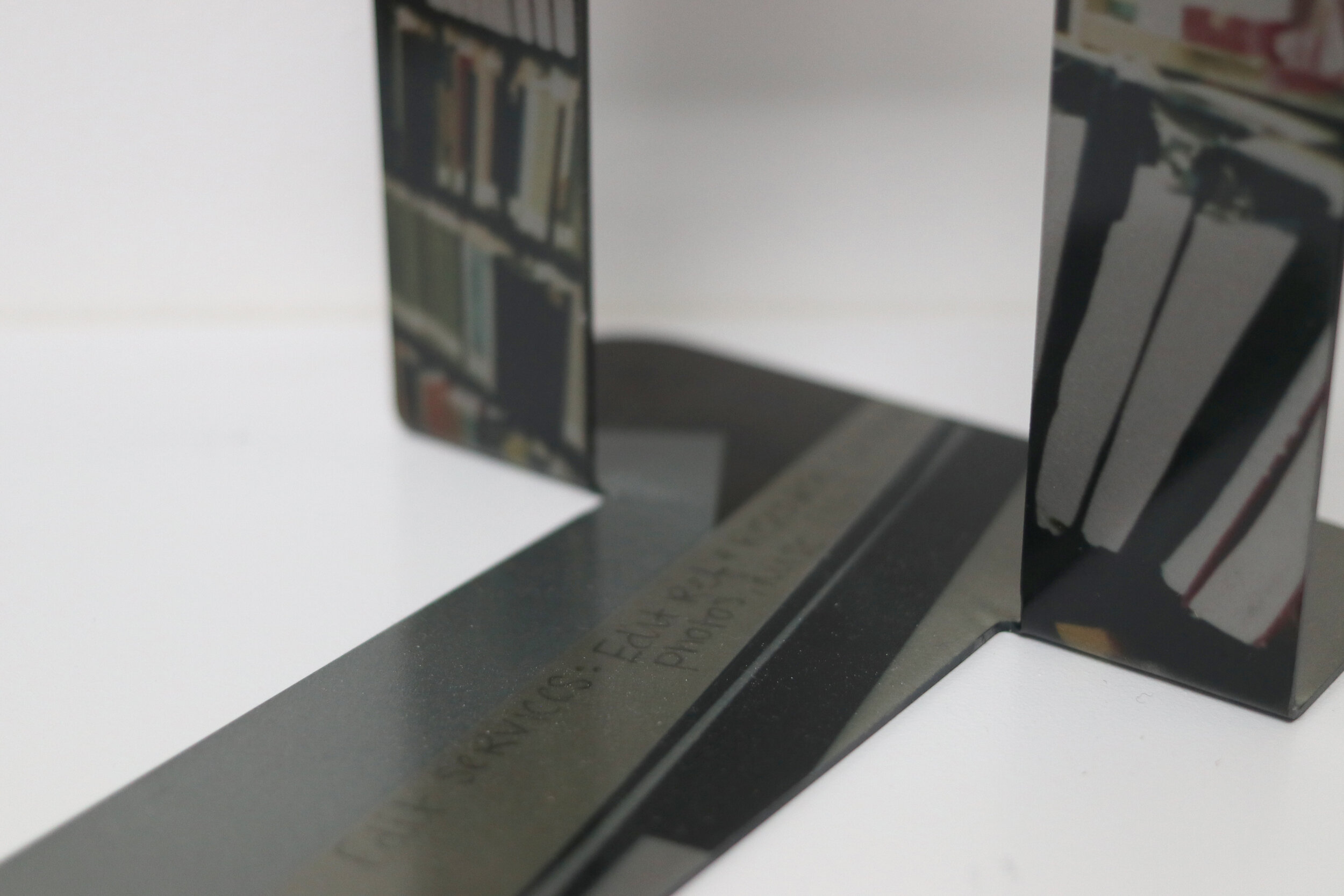
The sound piece of Sophia Saze is based on the complexity of the conflicted relationship between humans and technology, where the border between the real and constructed self is erased in continuous electronic glitches.
Ceramic pieces of Gabriela Vainsencher could be placed somewhere between the sculpture and the drawing. Taking a human hand as a starting point, they become ambiguous and amorphous creatures crawling all over the gallery space either to escape the danger or instigate one.
